The excitement that I felt unboxing the Hasselblad X2D 100c was the same endorphin high as when I saw my yellow Hasselblad 501cm for the first time. Everything from the embossed black boxes to the cloth-covered USB-C cables looks and feels luxurious. It has the beautiful high-end grip and beloved simplistic menu systems as its predecessors. Hasselblad has also added 7 stops of 5-axis IBIS, 1TB built-in memory, phase detection, and a CFExpress Type B slot.
Hasselblad has priced it at $8,199 accordingly. For full-frame users, this will seem excessive. However, this is relatively low by Hasselblad standards. When you factor in the 1TB of memory, it’s pretty competitive. It is as slow as you would expect, and the images have every bit of wow factor you are accustomed to seeing.
Is the price justified? Although subjective, we think so. Keep reading to find out more.
The Big Picture
Hasselblad has done an excellent job improving upon the complaints of previous systems. Phocus has been updated and is much more usable. The addition of phase detection, improved battery performance, faster-charging speeds, 7 stops of 5-axis IBIS, 1TB built-in memory, and a CFExpress Type B slot are fantastic upgrades. The ability to charge the battery while tethered is a nice touch. Hasselblad’s premium grip and the best menu system make it a compelling option. It feels luxurious in your hands.
Hybrid photographers will not appreciate the lack of video functionality. Although, many like myself will appreciate that it’s truly a photographer’s camera. Some will miss the joystick, although Hasselblad has offered several options to make using the touchscreen as functional as possible. Be prepared to invest in a lot of storage. Files are approximately 250MB on average.
The X2D 100c is a premium medium format camera that produces beautiful images very slowly. Hasselblad will need to improve the autofocus speeds for the X2D to be used as a primary camera. It could be a five-star camera with a future firmware update.

We are giving the Hasselblad X2D 100c four out of five stars. Want one? You can pick one up from Adorama for $8,199. We recommend buying an extra battery and the charging hub.
Pros
- Beautiful Images
- Incredible dynamic range
- Premium build quality
- The most user-friendly menu system available
- My favorite grip of any camera on the market
- Built-in 1TB memory
- It doesn’t overheat in extreme conditions
- Phocus software is much better than in the past
- 100MP allows for significant crops with plenty of detail
Cons
- It’s slow
- Autofocus could be better
- No focus peaking
- Expensive
- 100MP requires a lot of storage
- Hybrid users will be upset there’s no video
Gear Used
We received a loaner from Hasselblad along with the Hasselblad XCD 38V and XCD55V lenses. Additional gear included a Nanlite Fixture Forza 150B and my personal Broncolor Siros L.
Innovations
The Hasselblad X2D 100c isn’t very innovative, and that’s not bad. It took everything photographers enjoy about medium format and refined it. True to form, the hand grip is one of the most comfortable on the market. Plus, the built-in 1TB memory is a fantastic selling point.
Ergonomics
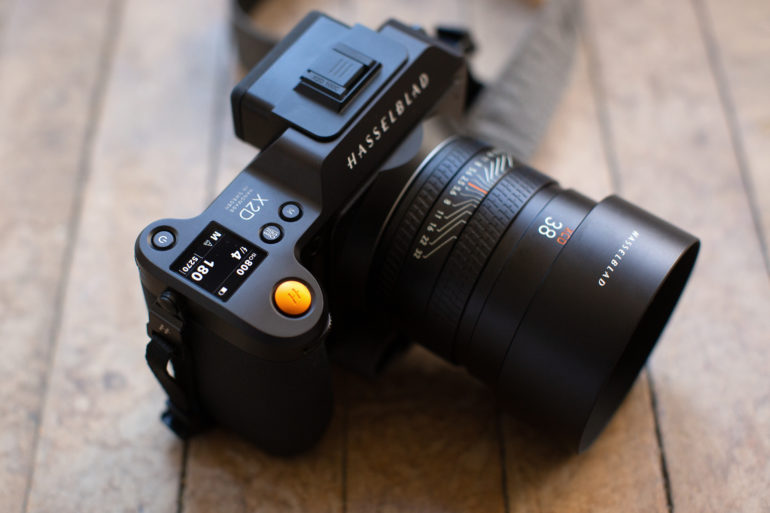
The Hasselblad X2D 100C looks similar to the X1D II with that stellar grip and a premium black metal finish. It is a few millimeters larger and is just as well balanced. Although there are many similarities in the looks department, there are subtle differences as well.
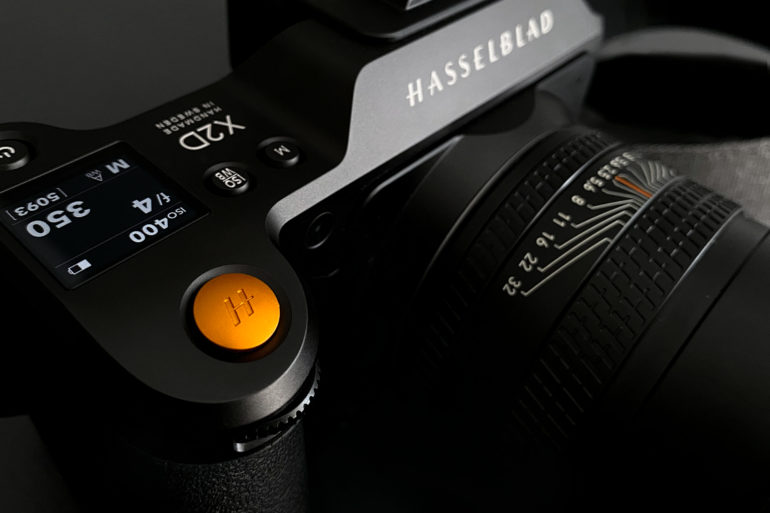
One of the first things you will notice is the lack of a mode dial on the top panel. A small LCD screen resides in its place. It’s a better design. The rest of the layout looks the same, including the trademark orange-hued shutter button. And it has the letter H engraved on it.
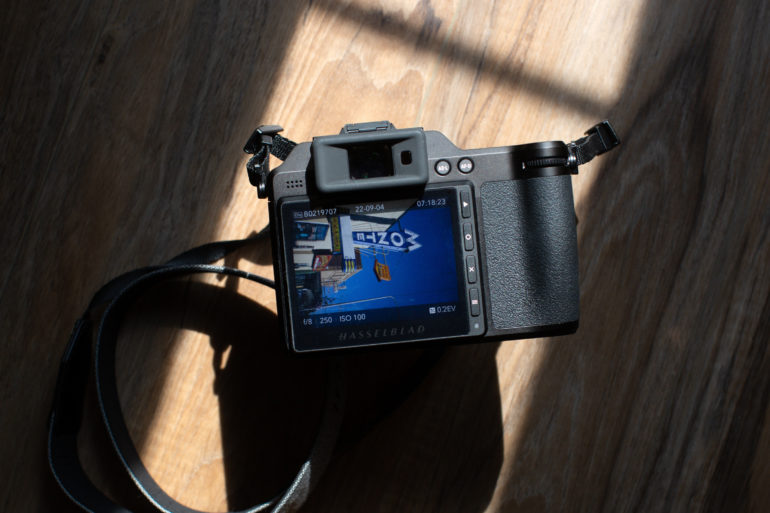
A large 3.6 inch LCD screen occupies most of the landscape on the back of the camera. There are four buttons to the right of the screen which navigate the camera menu system. I have always appreciated the simplicity Hasselblad uses here. If you can navigate a smartphone, you can operate this camera efficiently. Next to the viewfinder, you will find the AE-L and AF-D buttons.
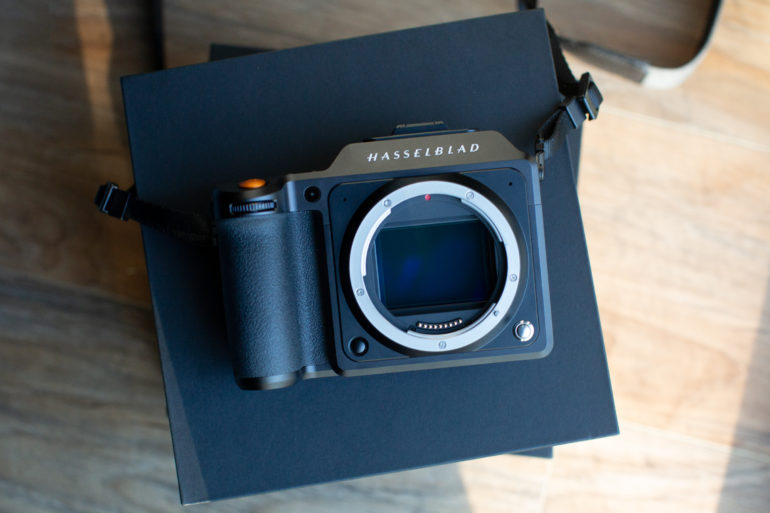
Here is a peek at the sensor. It’s larger than full frame!
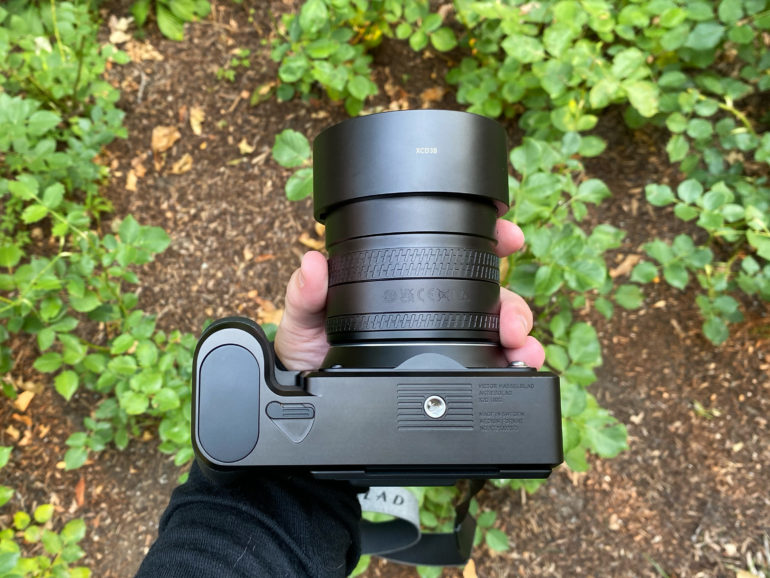
Battery access and a tripod mount are located on the bottom. The battery is accessed similarly to Leica’s SL-2s. It has a rubberized edge which adds weather resistance to the camera.
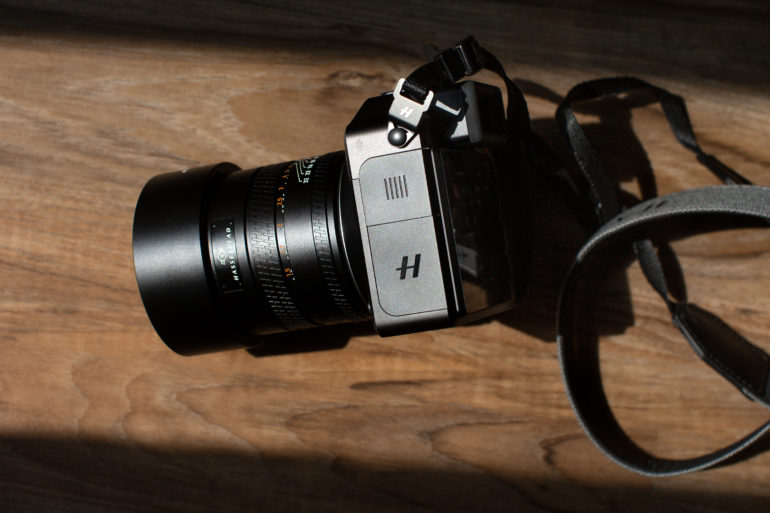
There are two panels on the left side of the Hasselblad X2D 100c.
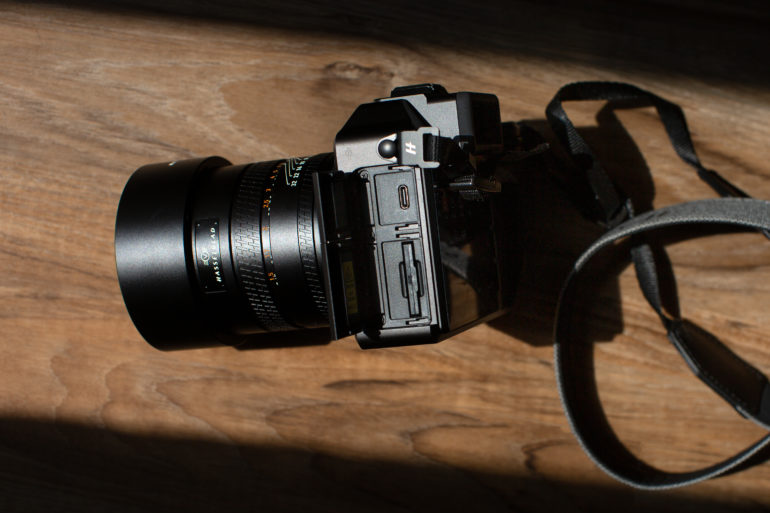
Slide them open to access a USB-c port and CFExpress slot.
Build Quality
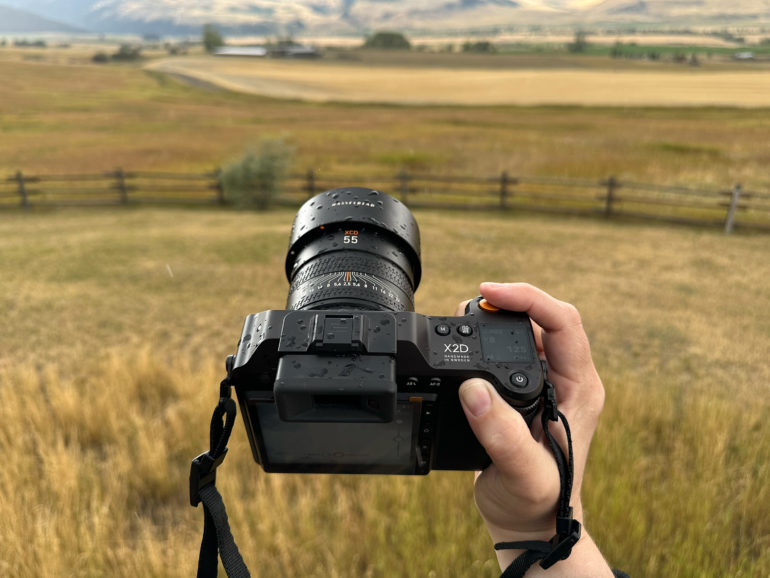
Hasselblad knows how to make a premium-feeling camera, and the X2D 100c is no exception. The metal housing is sleek, and the robust texturized hand grip makes it feel exquisite to hold. It is the most comfortable grip of any camera on the market. The touchscreen is very responsive and accurate. Each button feels excellent and works as it should. Even the panel doors glide with finesse. Hasselblad has done a fantastic job of creating a camera that feels like a natural extension of yourself.
My previous experience with the Hasselblad X-system was with the original X1D 50c. I remember how hot the battery got after photographing a fast-paced set indoors. That was after the firmware update. Last summer, I was photographing with the Fujifilm GFX100s in 104-degree heat, and the camera overheated. The X2D 100c did not overheat or malfunction in similar conditions.
Two weeks later, I was updating the portfolio of a local model on a typical Montana autumn day. It is not unusual to get all four seasons in one day. It was just above freezing in the morning with rainstorms and gusty winds that blew in about every 15 minutes in the afternoon. The Hasselblad X2D 100c accepted the challenges and performed as it should. Sensor dust was non-existent. There is a weather resistance ring around the shutter and battery. However, there is no IP rating. Even though it handled remarkably well in moderate moisture, I would not recommend using it in downpour conditions.
Focusing
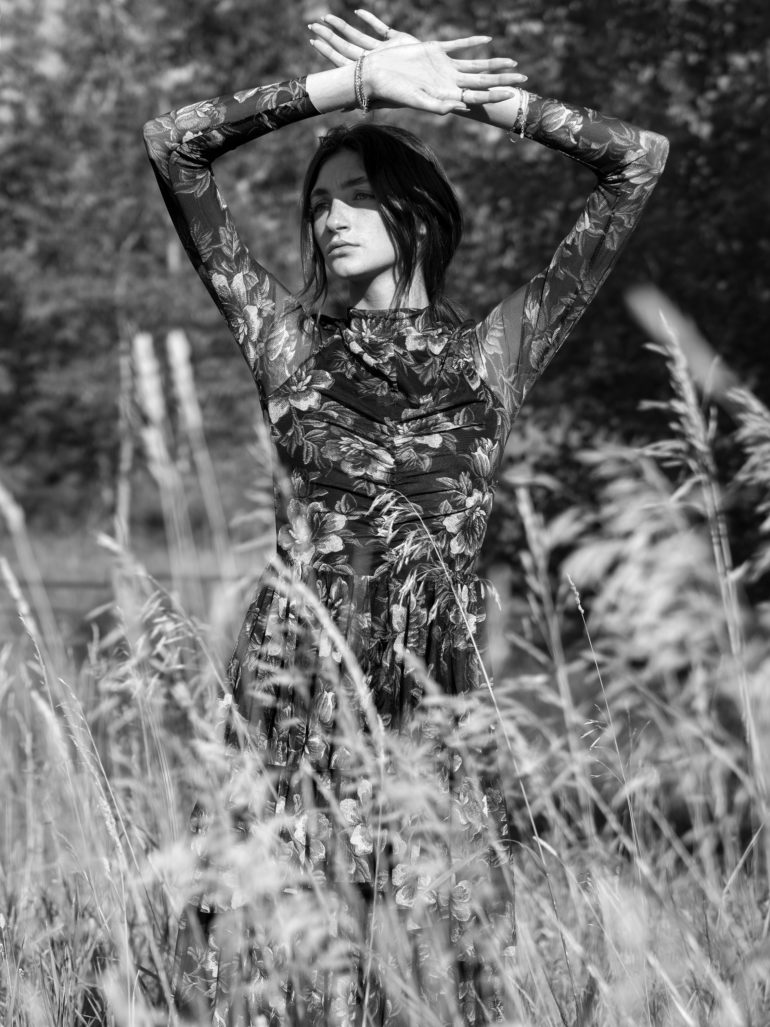
The X2D 100c feels lethargic compared to Sony, Canon, and Fujifilm’s X-System. Medium format is slower than your average DSLR and mirrorless camera. However, the slow pace and rolling shutter resulted in a few missed frames that would have been incredible. Although slow, it achieves focus well in various challenging light conditions.
Hasselblad does not have Eye AF, Animal Eye AF, or vehicle tracking. Tracking and Eye AF would be very beneficial for demanding fashion imagery. It would also be great for slower images.
When using a large focal point with minimal background separation, the camera often focuses on the background instead of the subject. Use the small focal point to ensure that it encompasses your subject’s eye for the best results. Granted, I was testing a pre-production unit. It may not be much of an issue with the final product and updated firmware.
There were a few moments when photographing through tall grass and close-up where I found it quicker to utilize manual focus. There is no focus peaking, which is a shame as it would be advantageous. The addition of IBIS is terrific for long handheld exposures.
The X2D 100c is a camera built for specificity, not for speed. Hasselblad’s autofocus is incredible for static imagery. When it hits, it hits hard and produces stellar images.
Ease Of Use
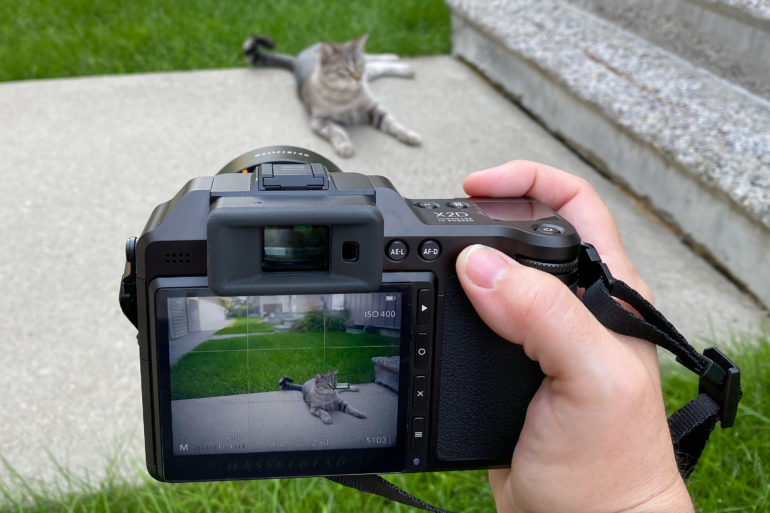
The Hasselblad X2D 100c is simple and to use. It is one of the only cameras that I have not needed to spend time customizing right out of the box. Hasselblad did an excellent job designing this camera for photographers.
The intuitive camera menu system reminds me of a smartphone. The minimalistic menus are easy to navigate and pair well with the large LCD screen. It’s as simple as tapping and swiping. If you can operate an iPhone, you will feel at home working with this camera.
You can assign special functions to the buttons as you would with other cameras from other manufacturers. Customize the X2D for how you photograph, and you will not be disappointed. I like to adjust my aperture with the aperture ring and use the wheel to adjust the shutter speed. You can even choose to navigate the AF point with the wheel.
You can also move the AF point with the LCD screen. It does take a little time to become acquainted with, and it soon becomes second nature. I set it up to use with my left hand and appreciate that Hasselblad gives users a choice. Not everyone is right-handed. I was a lefty trained to be a righty, and cameras have never quite felt right. Hasselblad accommodates my ambidextrousness.
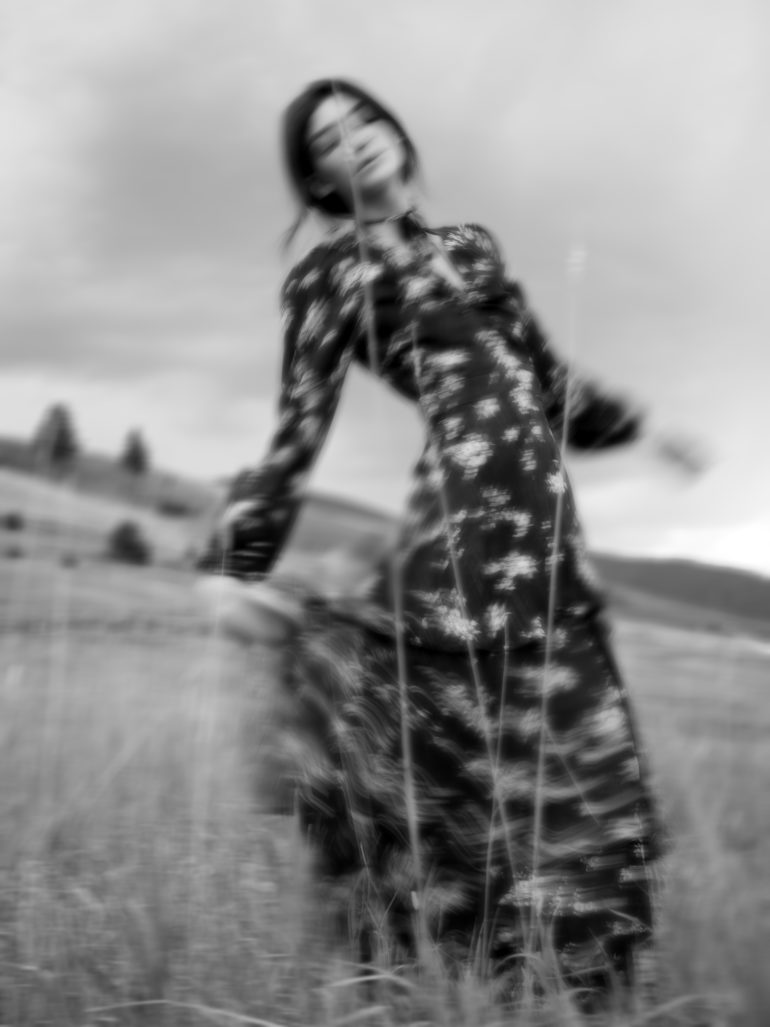
The rolling shutter can be challenging and, at times, frustrating to nail the timing of intentional motion blur. My favorite fashion images are full of movement. It was a peculiar experience pressing the button for my intended frame and seeing a different result. There were a few frames where her hand was lost entirely and appeared amputated. These types of images require a bit more practice to execute with the X2D 100c.
Hasselblad’s electronic shutter is astonishingly quiet. It provided a more sensory experience when photographing outdoors. On the same token, it threw my clients off during portrait sessions. We have conditioned many people to listen and respond to the sound of the shutter with digital cameras.
The mantra has always been the more frames, the better. With the X2D, this is not the case. Successfully executed portraits without a monolight require much more communication with your subject. It’s a much slower, more methodical process.
The battery is rated for 420 frames, which is accurate. That doesn’t seem like a lot compared to full-frame offerings, although it’s plenty. A full battery lasted for the majority of a model portfolio session. The number of frames captured was also significantly less than with full-frame offerings as it is slower. I only took about 100 images on the other days of normal photographing. The battery takes approximately two hours to charge fully. It will also charge while tethering, which is a great feature.

Last but not least, the 100MP sensor comes in very handy when you need to make various crops from one frame. This is an example of the unedited full frame.

And here is the detail when cropped in significantly.
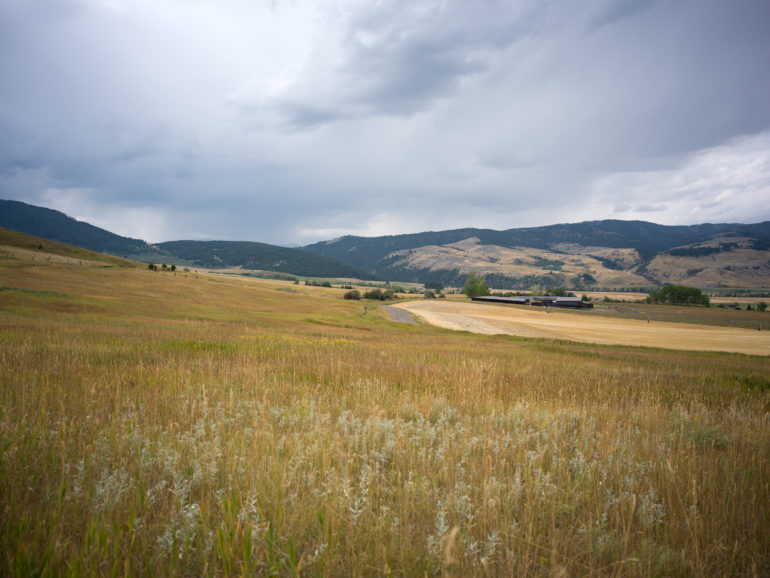
This is a landscape example.
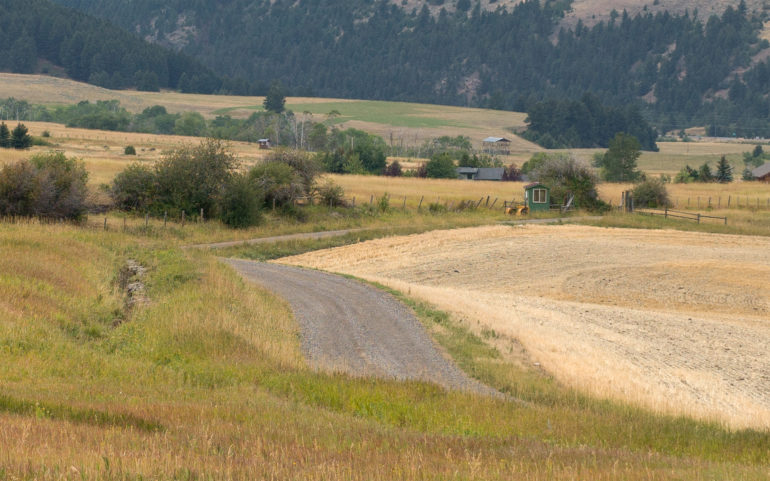
Look at the detail in the crop.
Phocus
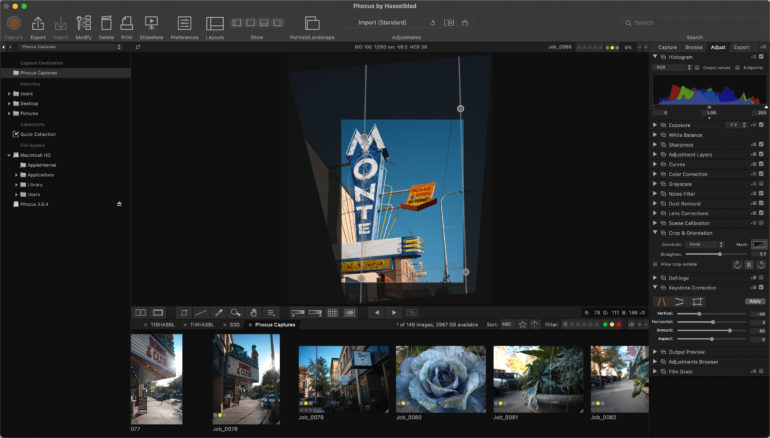
I was pleasantly surprised when I launched the Phocus app on my MacBook Pro. The last time I used the program was over three years ago and it left a lot to be desired. It is much more functional and has a user-interface that is similar to Capture One. I use it to make global adjustments and then pull it into Photoshop for skin editing. You can also pull the files directly into Lightroom Classic and Lightroom CC if you prefer.
Hasselblad has added the perk of charging the battery while tethered. Currently, Phocus does not support wireless tethering. Although, Hasselblad tells us it’s coming along with an updated Phocus 2.
Metering
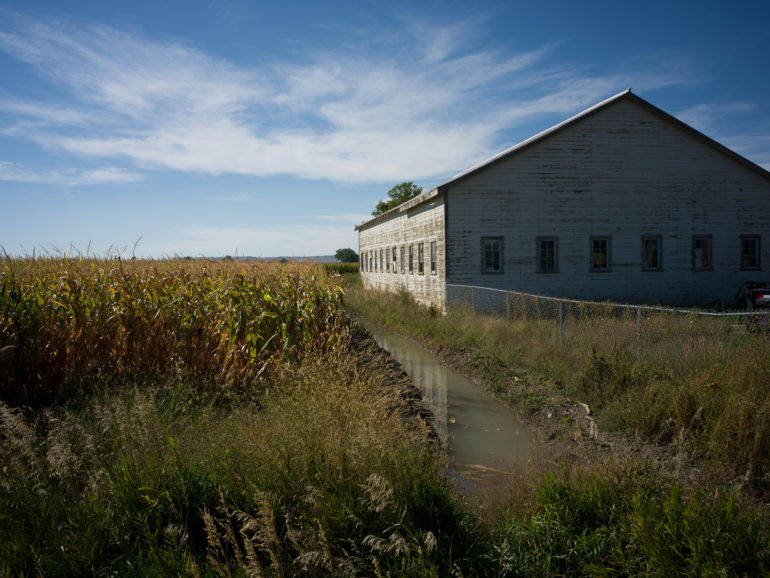
Hasselblad’s X2D 100c excelled in our Sunny 16 tests. Most of the images were either spot. The few discrepancies were within less than .2 of a stop. It is very accurate and trustworthy.
Image Quality
The Hasselblad X2D 100c produces exuberant real-life hues with images that are sharp and full of detail. Shadows are lovely without being overbearing. This is excellent when utilizing hard light for portraits. Raw images require minimal, if any, editing. Its 100MP sensor allows for significant crops that have plenty of detail.
JPEG Quality

Hasselblad’s JPEG images are fantastic. The colors are lovely, and the images are sharp without being over the top. I would feel confident delivering JPEG images to my clients.
High ISO Output
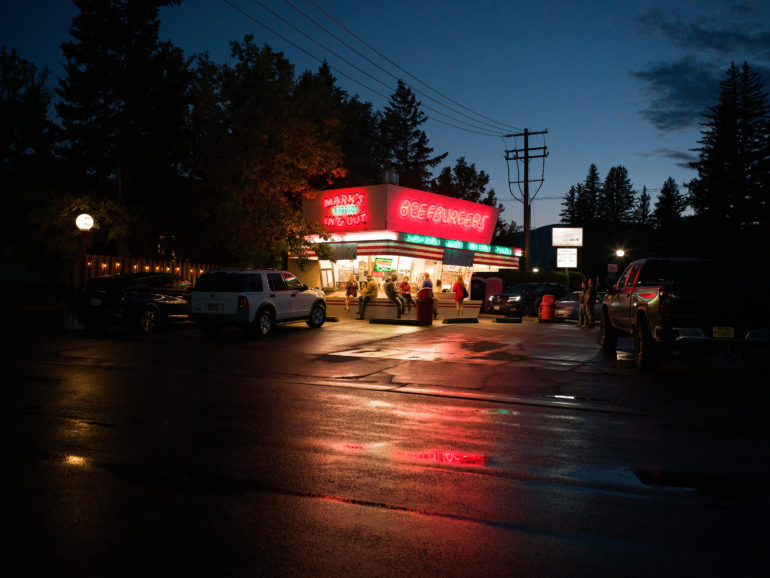
The Phoblographer’s print tests are our ultimate way to see how modern cameras do with their high ISO output. So we printed a photo at ISO 6400 from the Hasselblad X2D 100C on Canson paper using our tried and true Canon Prograf 1000 printer. The print was made at 17×22 inches; otherwise known as ANSI-C paper. No editing was done to the image, just an export as a TIFF and then a print from Capture One Pro 22.
The print looks wonderful. And compared to our Fujifilm GFX 100 print, the difference is only noticeable to a trained eye. And that difference is so incredibly minute that it’s pedantic to even discuss it. With that said, if you’re looking to showcase large prints at ISO 6400 at a gallery show, then it’s surely possible.
Raw File Versatility
I often joke that camera sensors are getting so good that you could take an entirely black image and recover it. The Hasselblad X2D 100c epitomizes this notion.

Here is what is possible with an underexposed image.
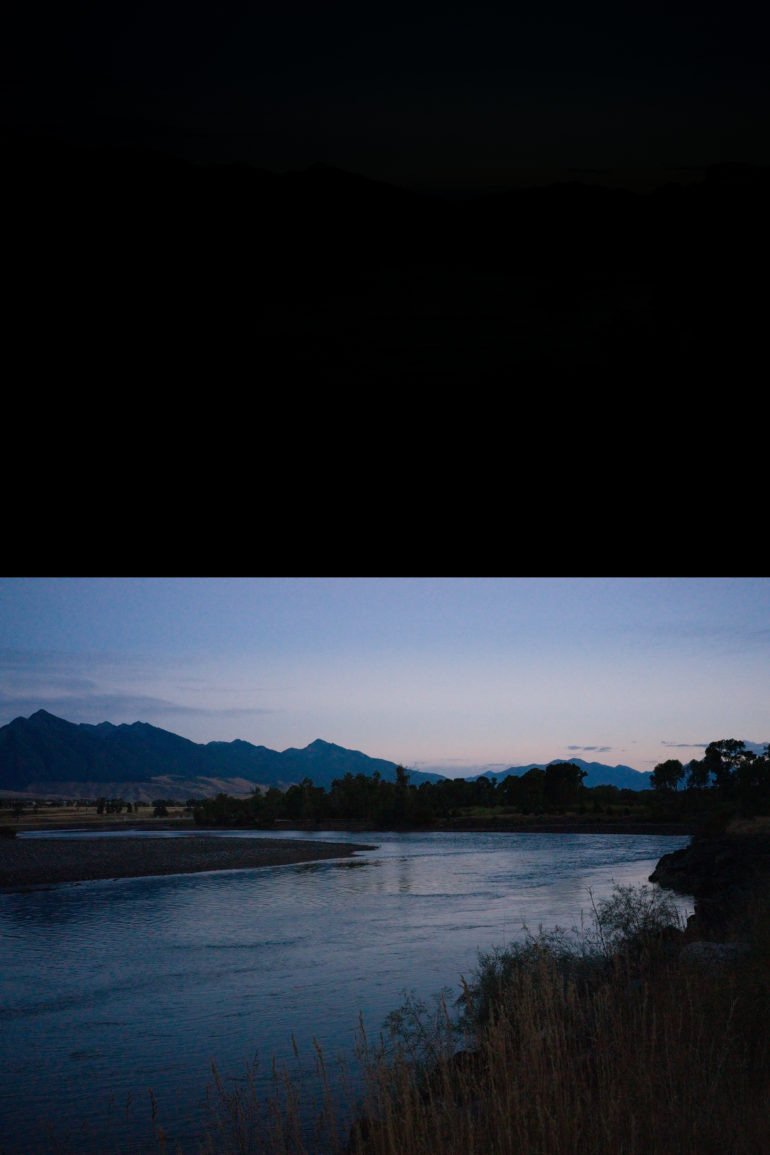
This image was underexposed and I pushed it to the extreme at ISO 6400. As you can see, the shadows recovered admirably.
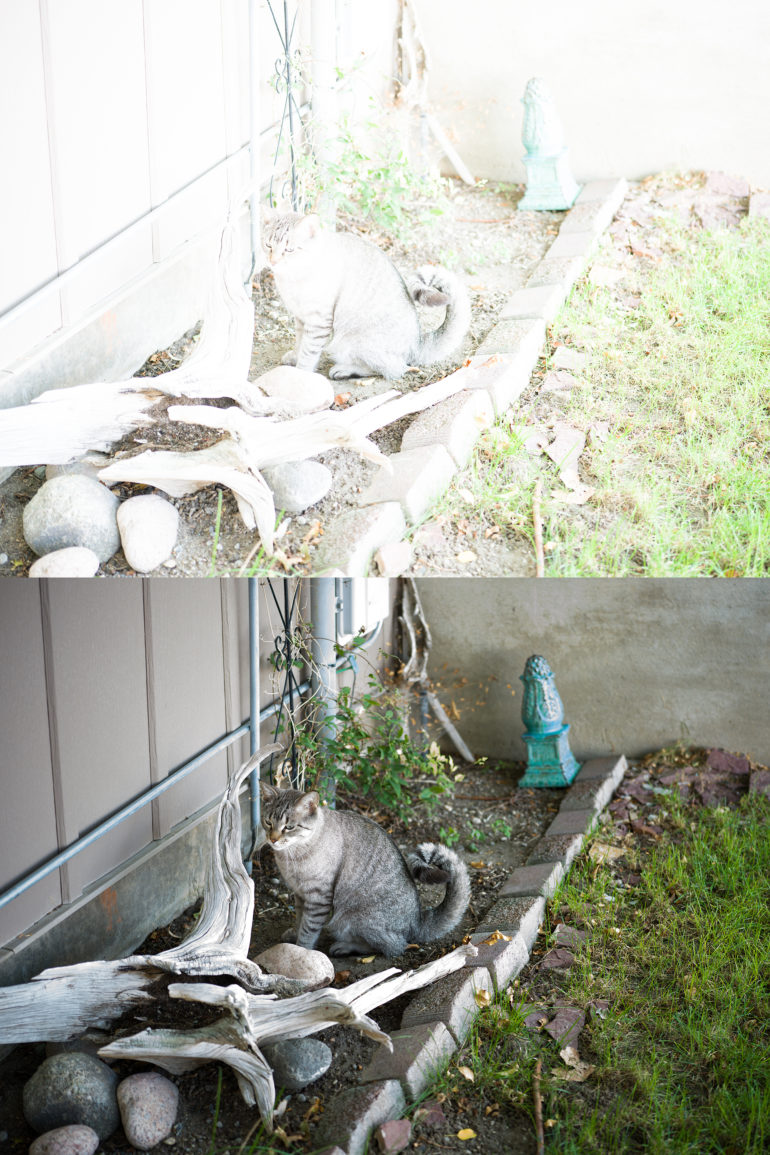
I overexposed this image by several stops and blew the highlights. The X2D 100c recovers most highlights very well. If an image boasts almost pure white tones, you will have a tough time recovering those highlight details, as with any camera.
Extra Image Samples
From day one, The Phoblographer has been huge on transparency with our audience. Nothing from this review is sponsored. Further, lots of folks will post reviews and show lots of editing in the photos. The problem then becomes that anyone and everyone can do the same thing. They’re not showing what the lens can do. So we have a section in our Extra Image Samples area to show edited and unedited photos. From this, you can make a decision for yourself.
Unedited
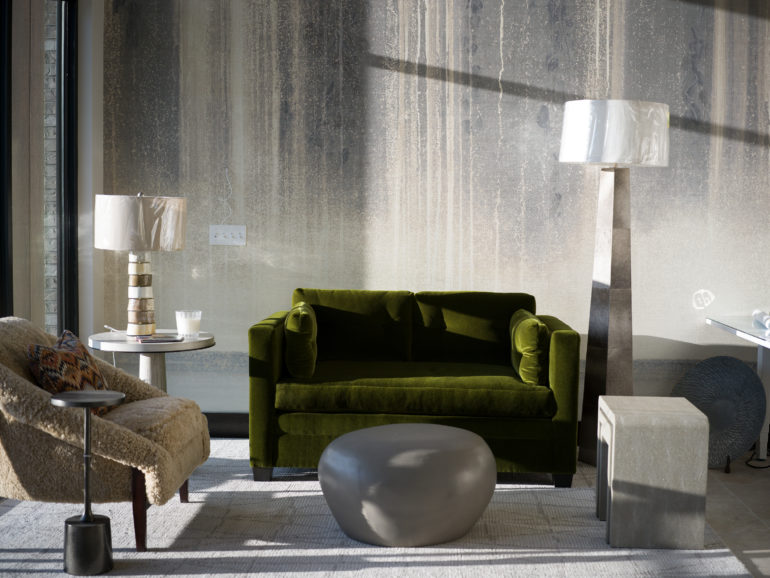
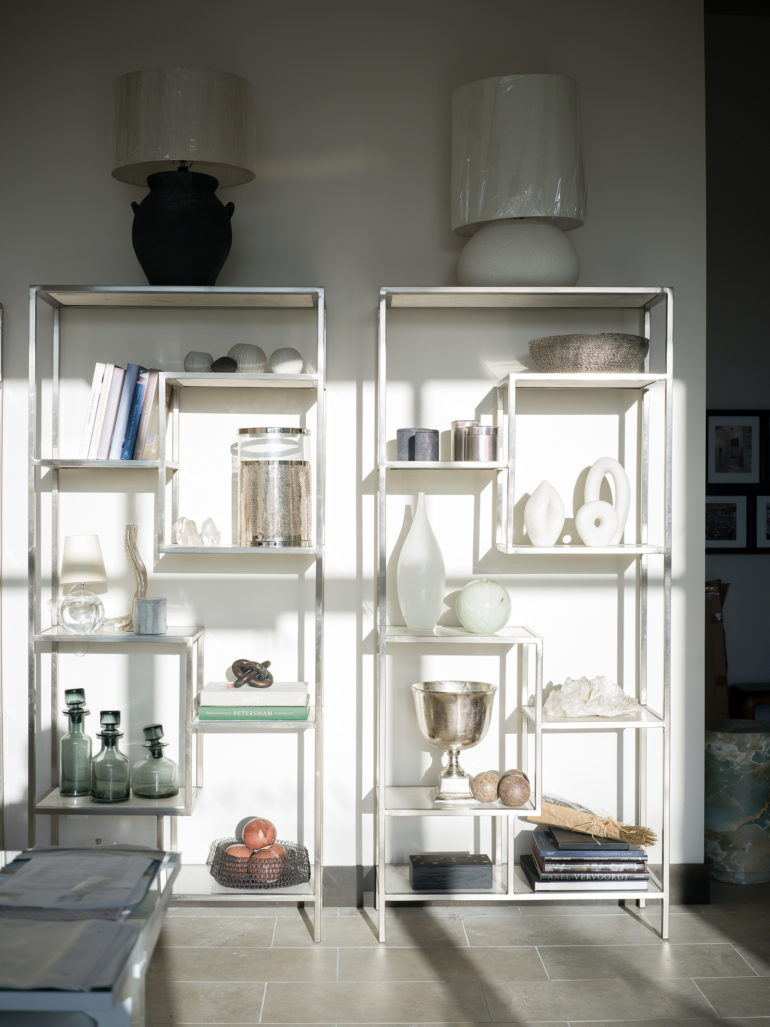
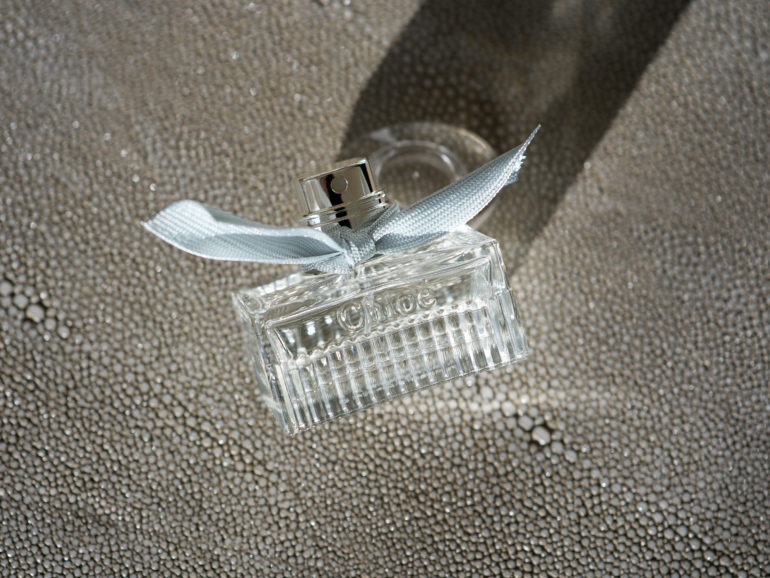

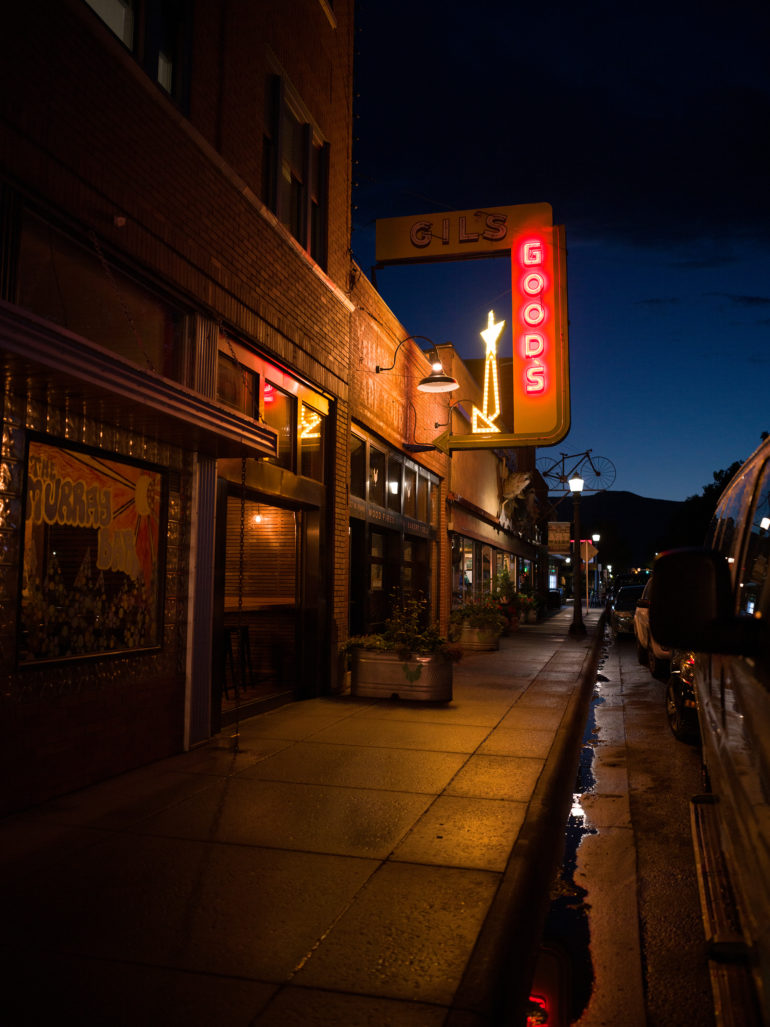
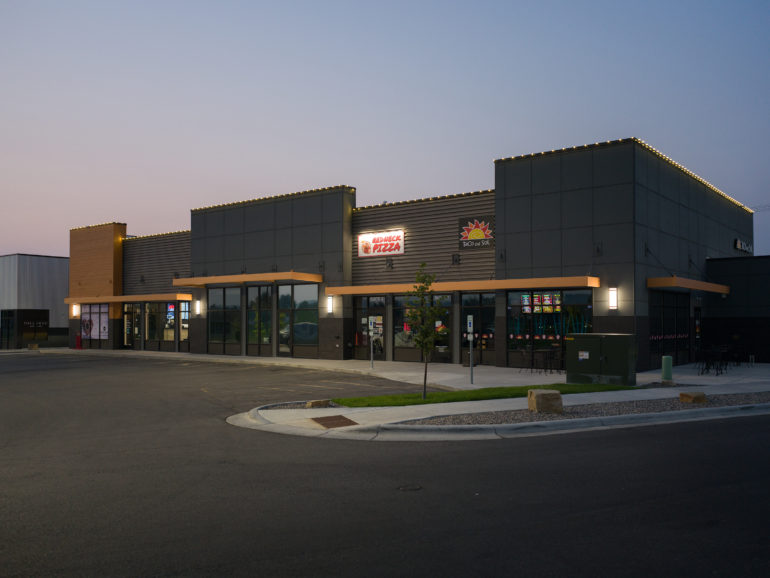
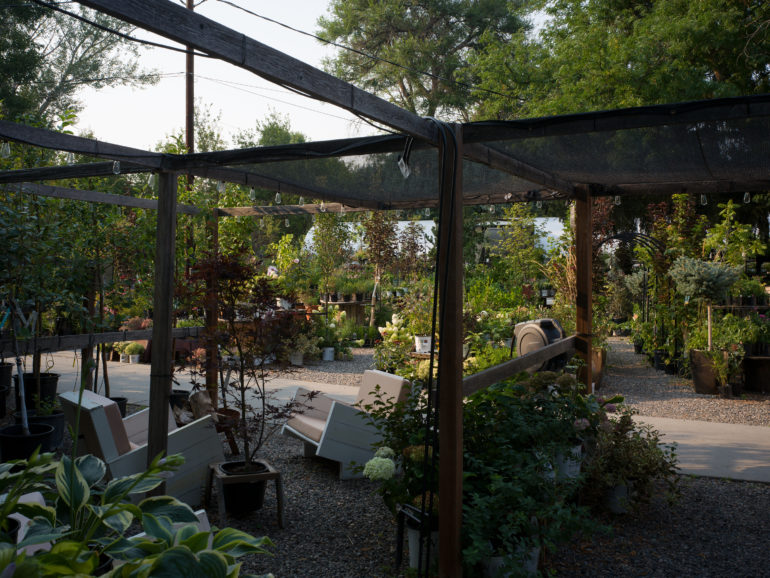


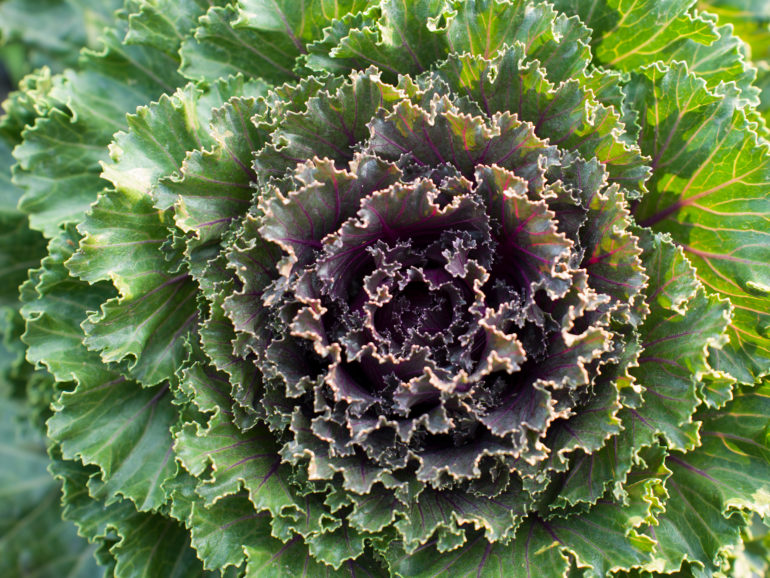
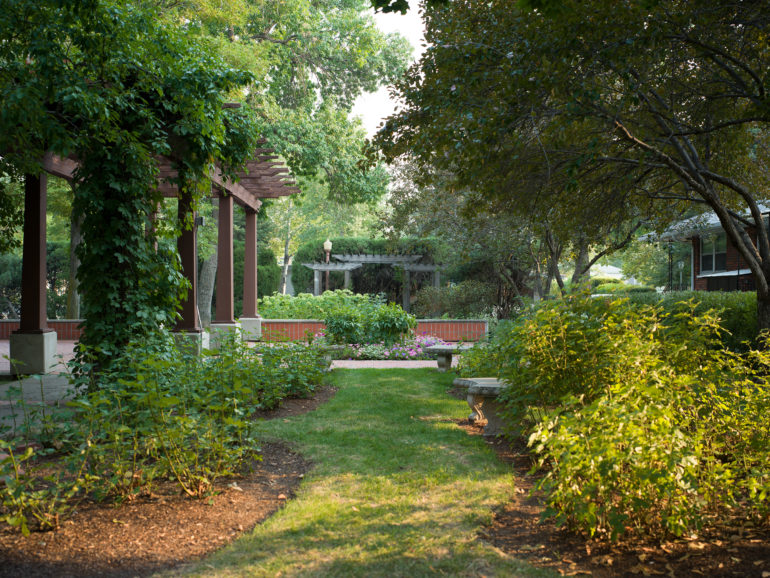
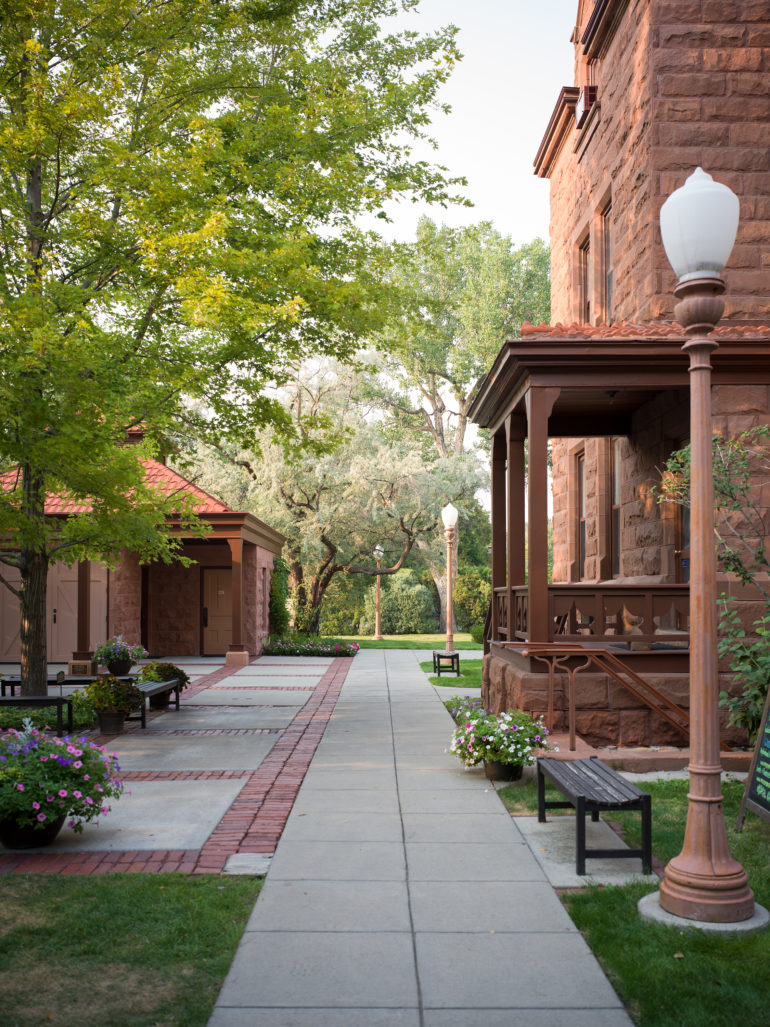
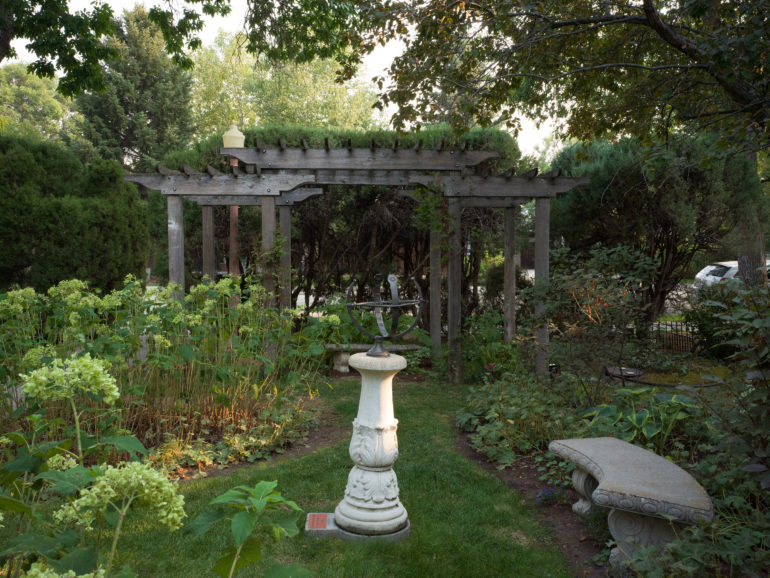
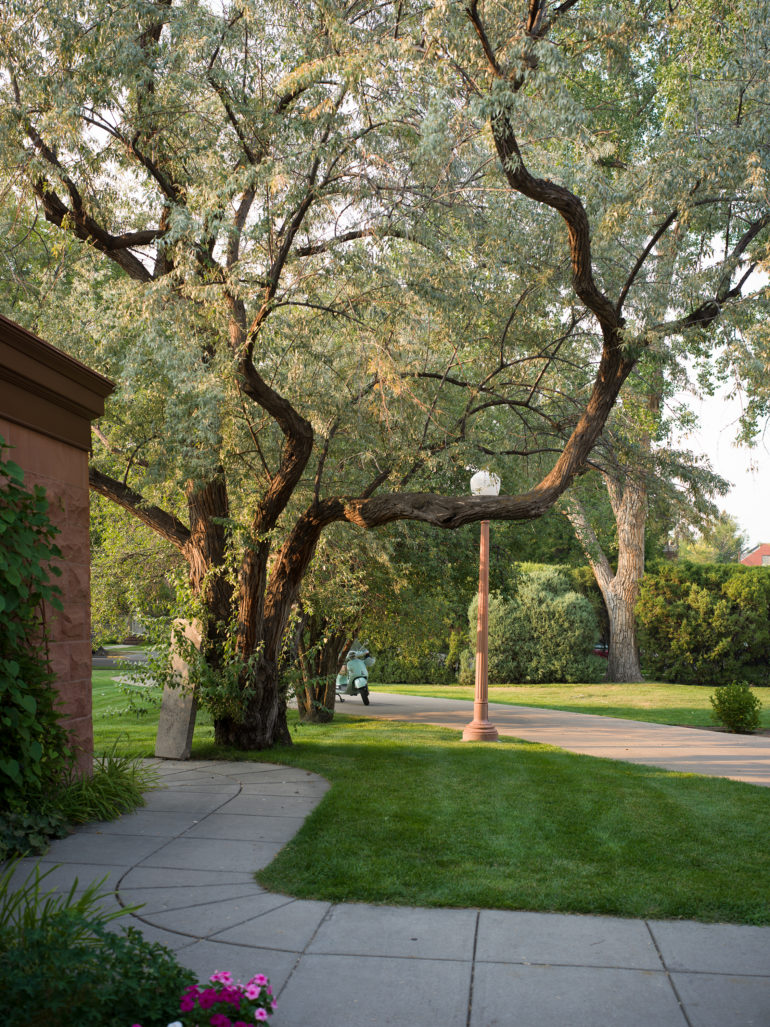




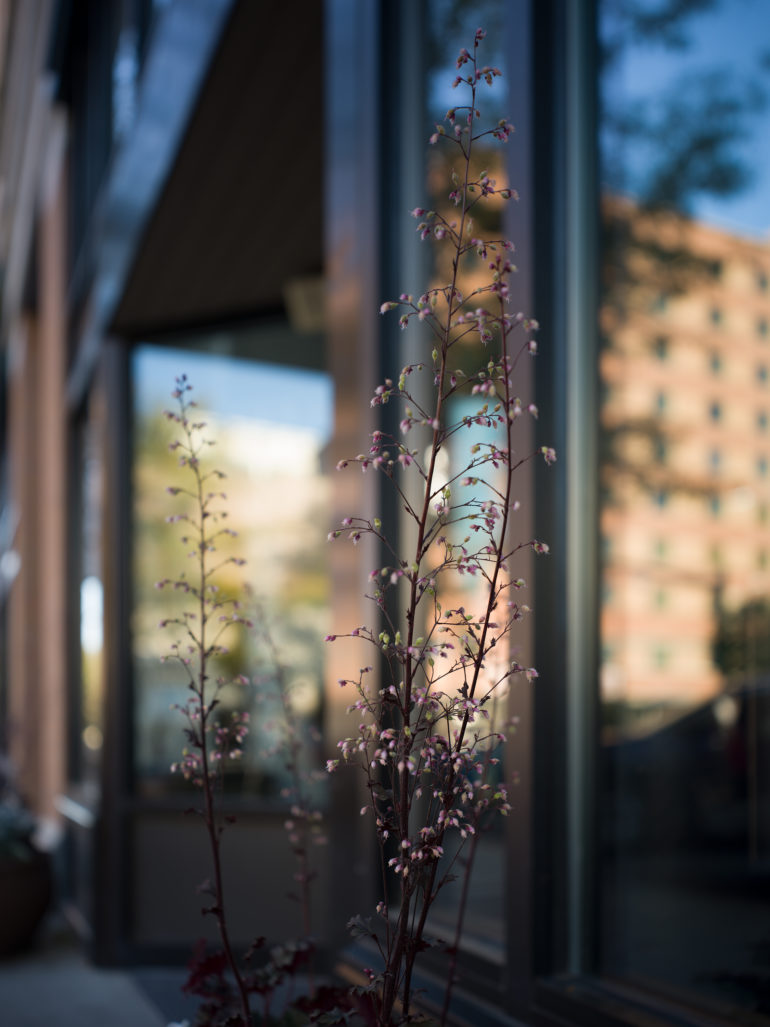
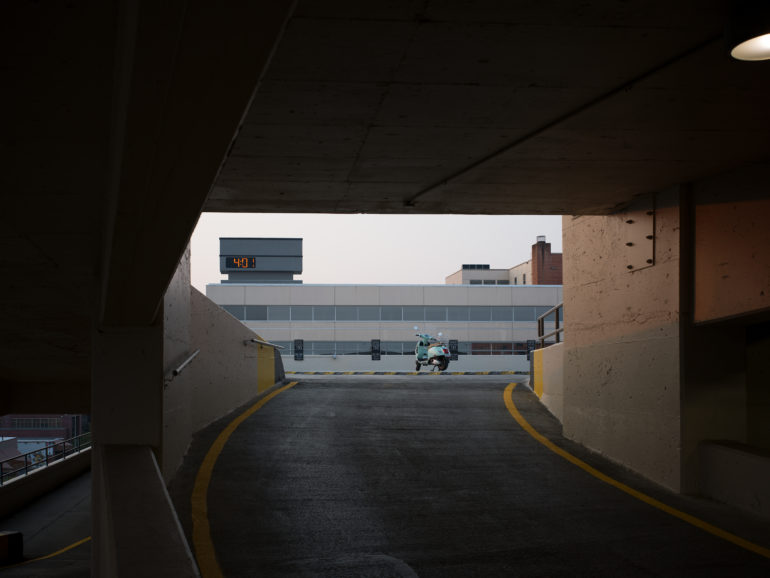
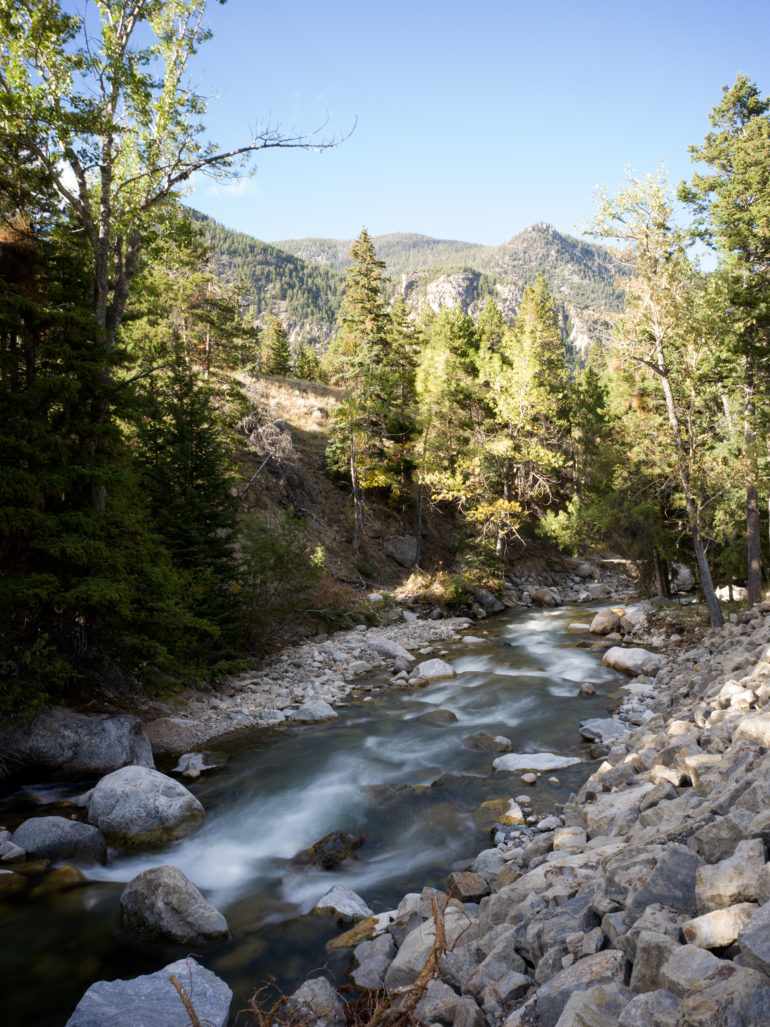

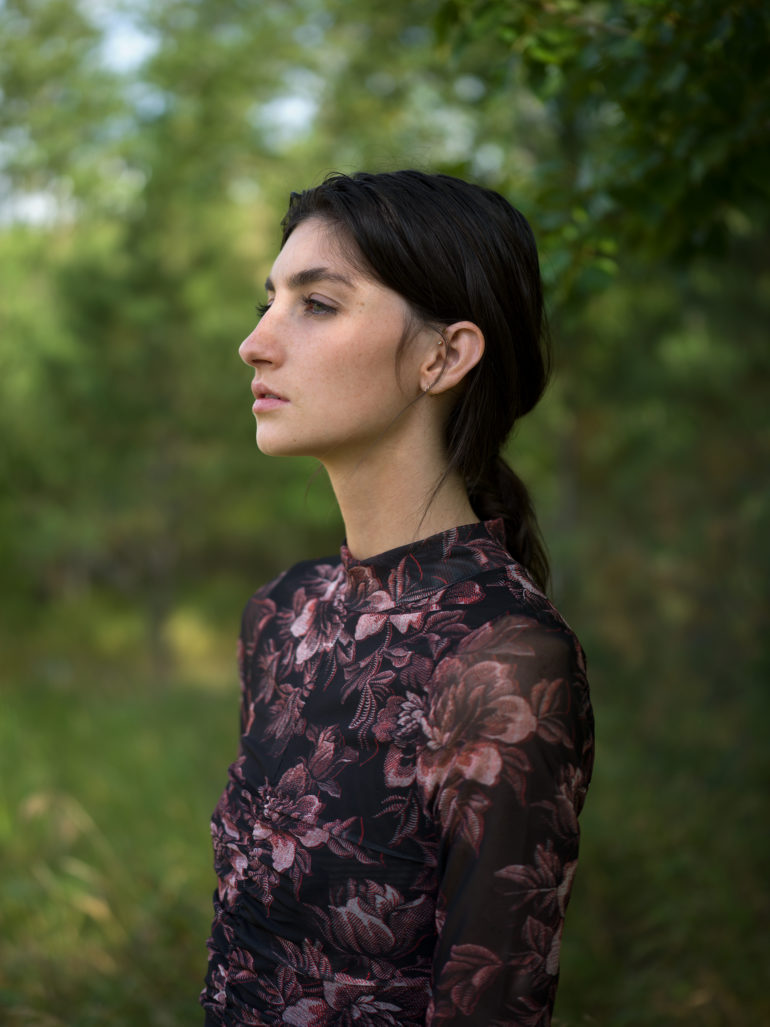

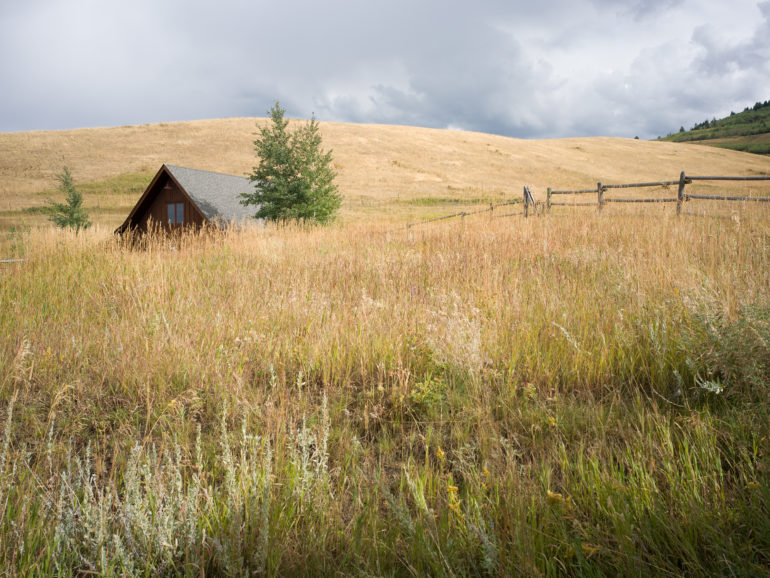
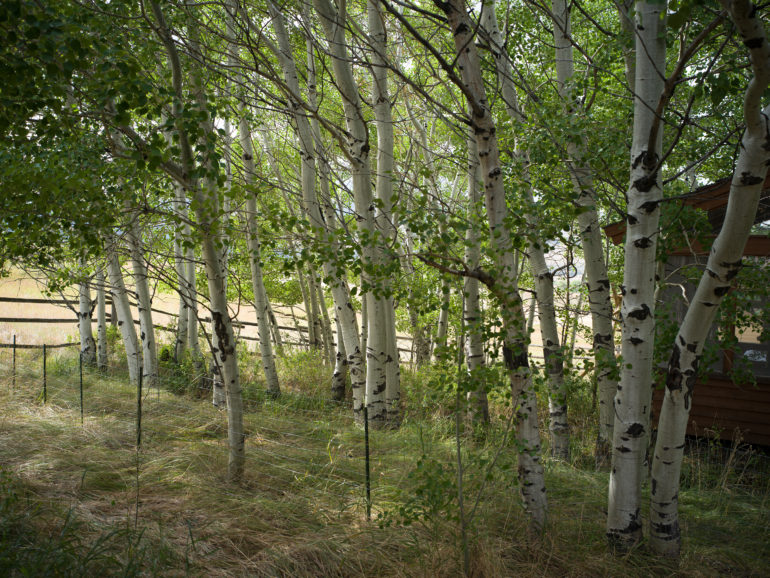
Edited
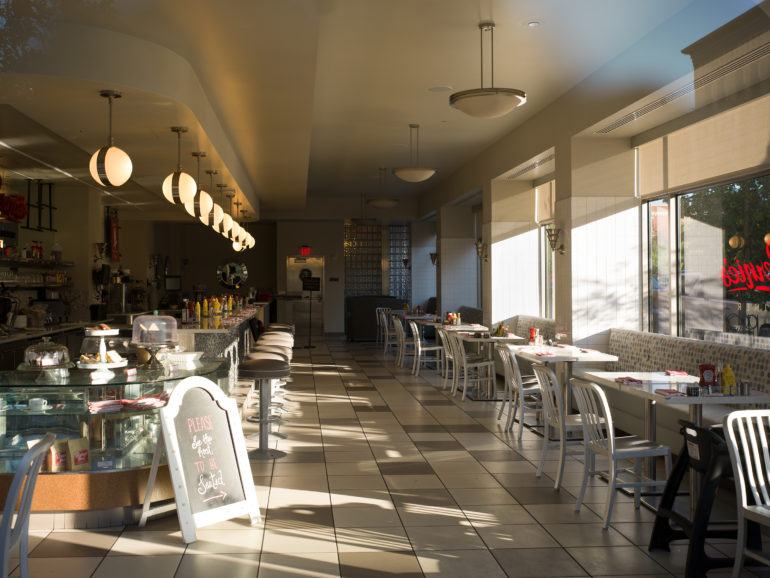
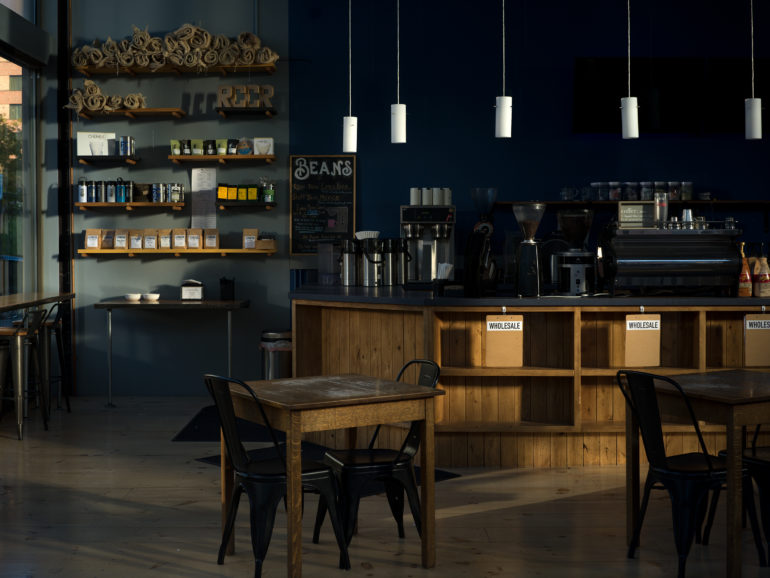
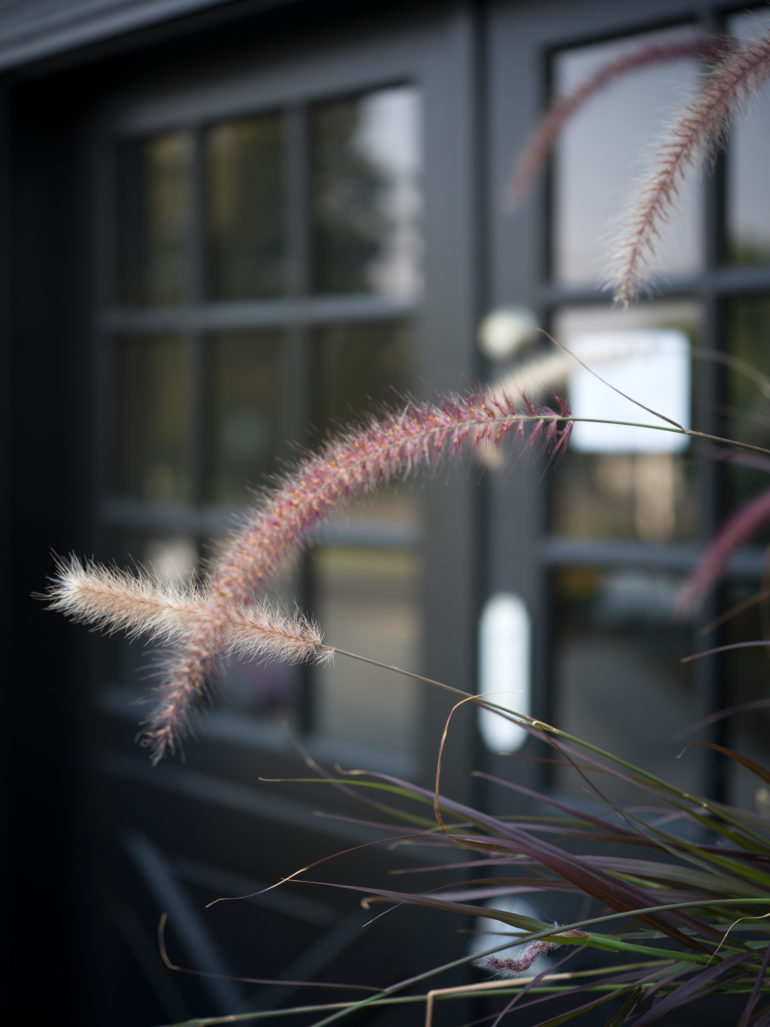


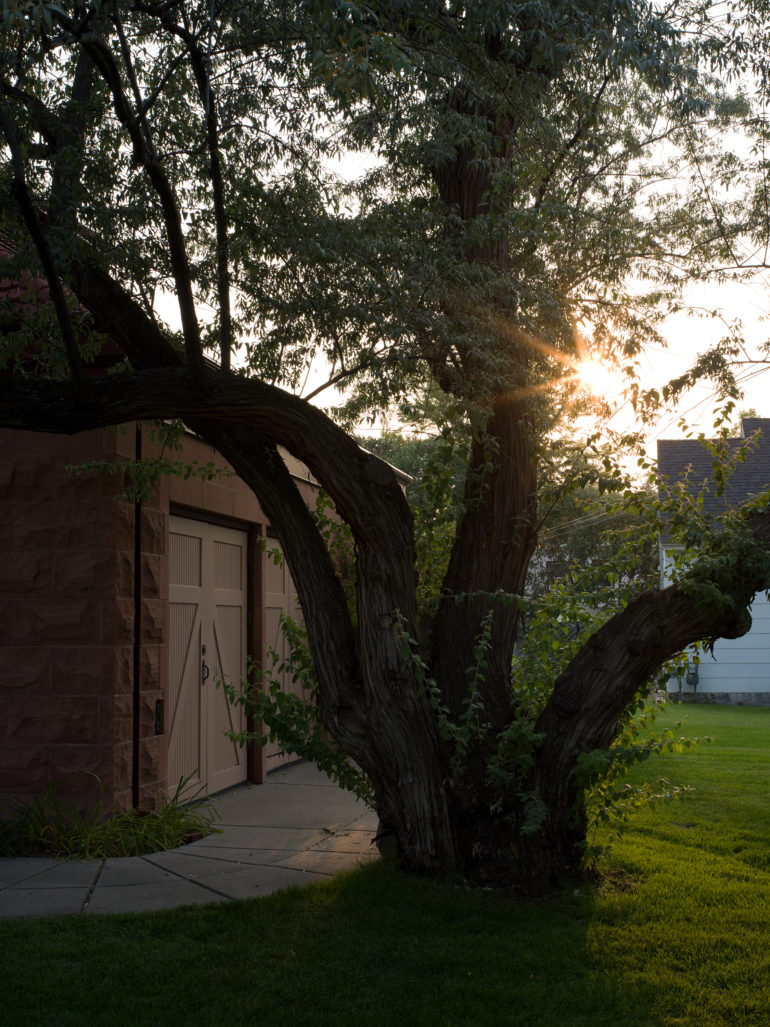
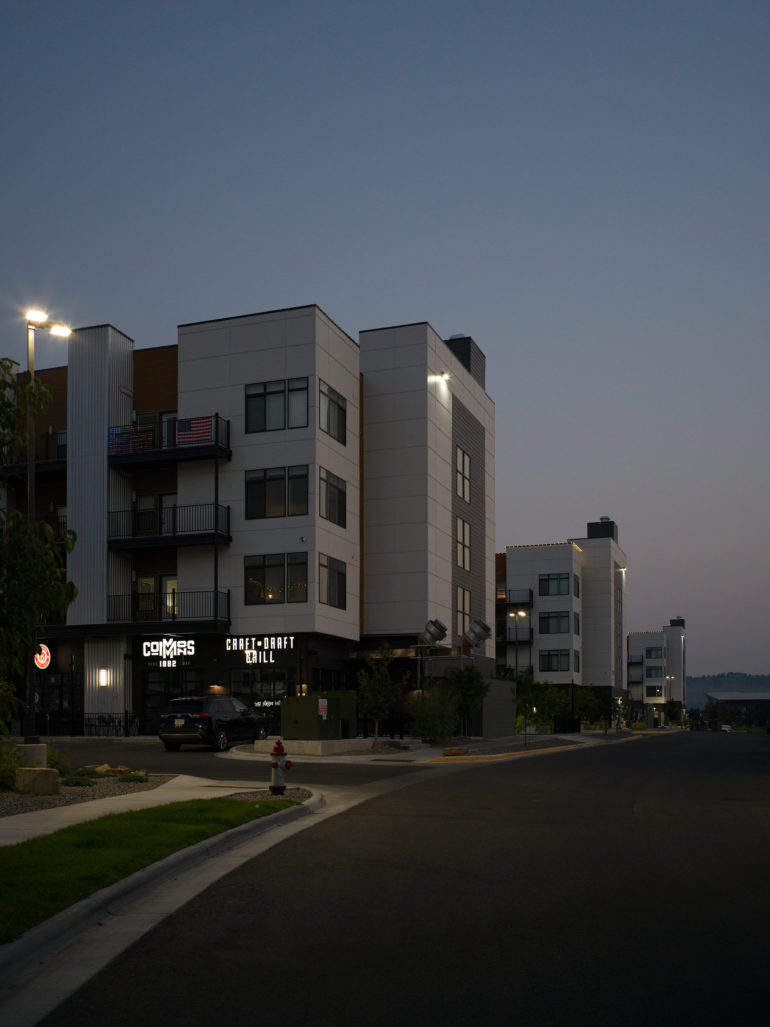
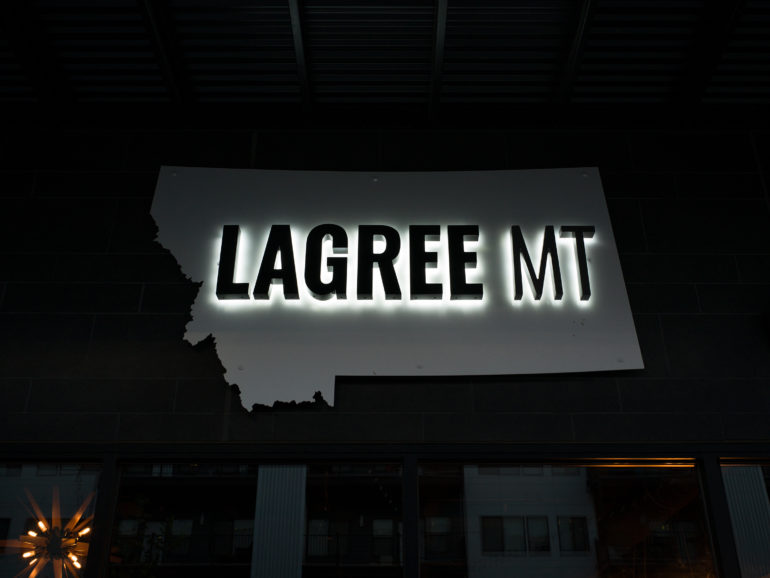
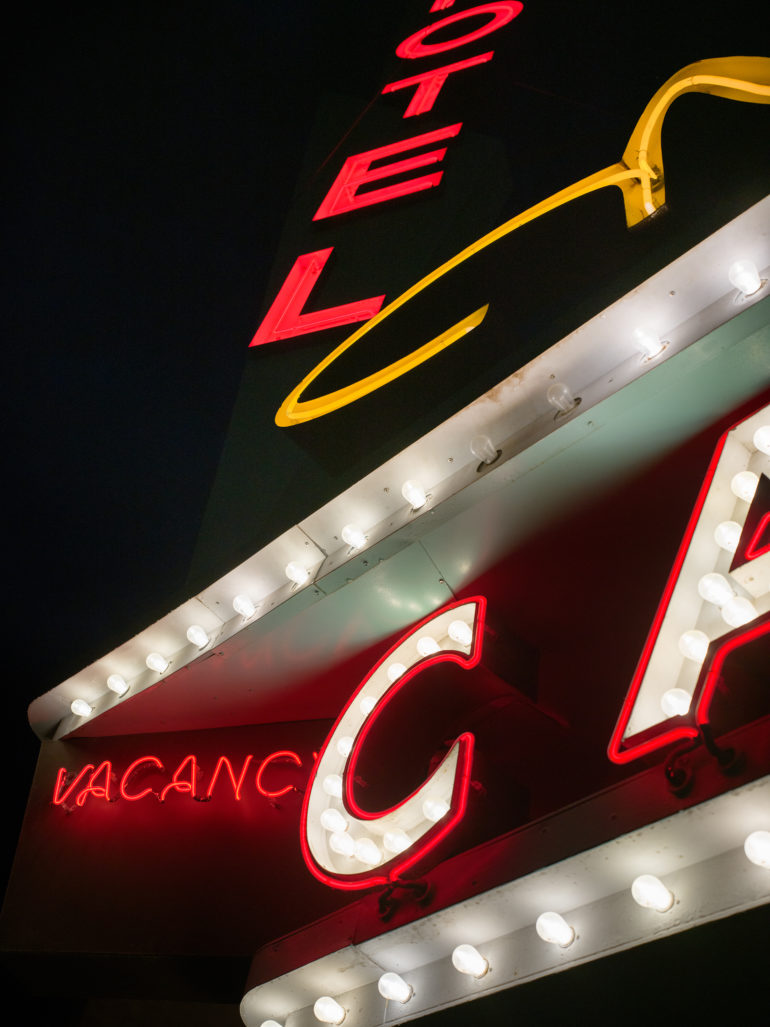

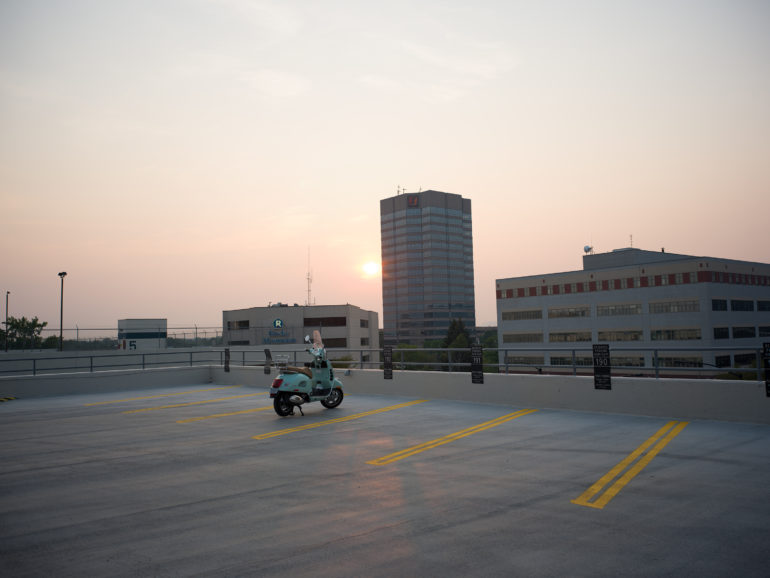



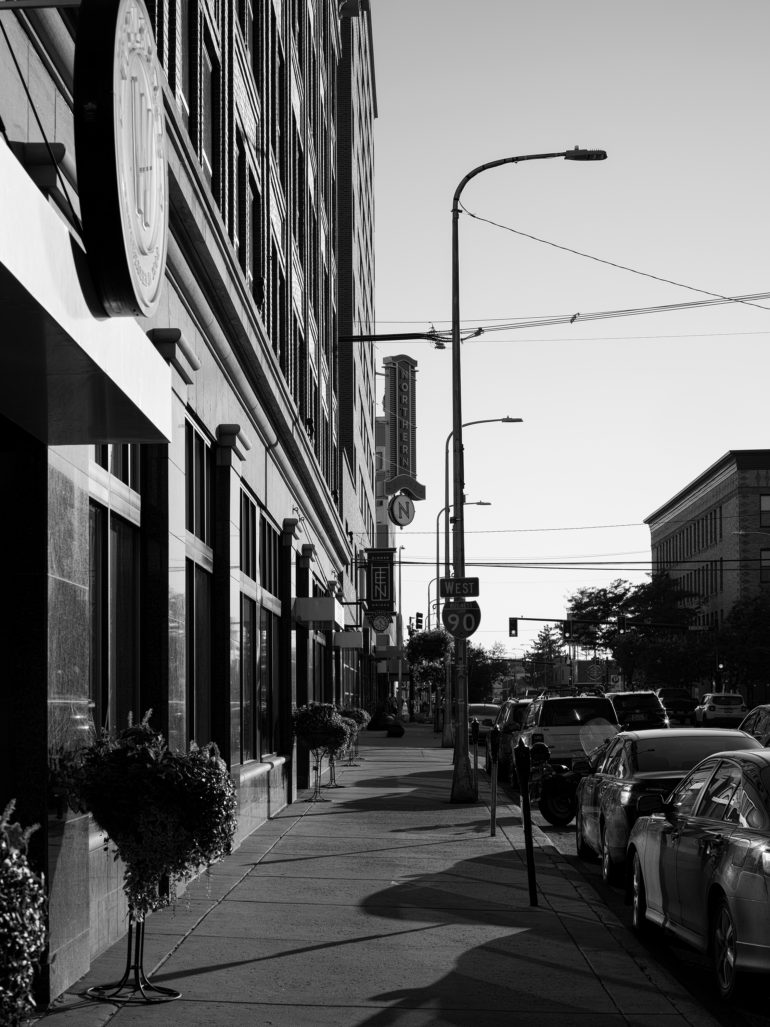
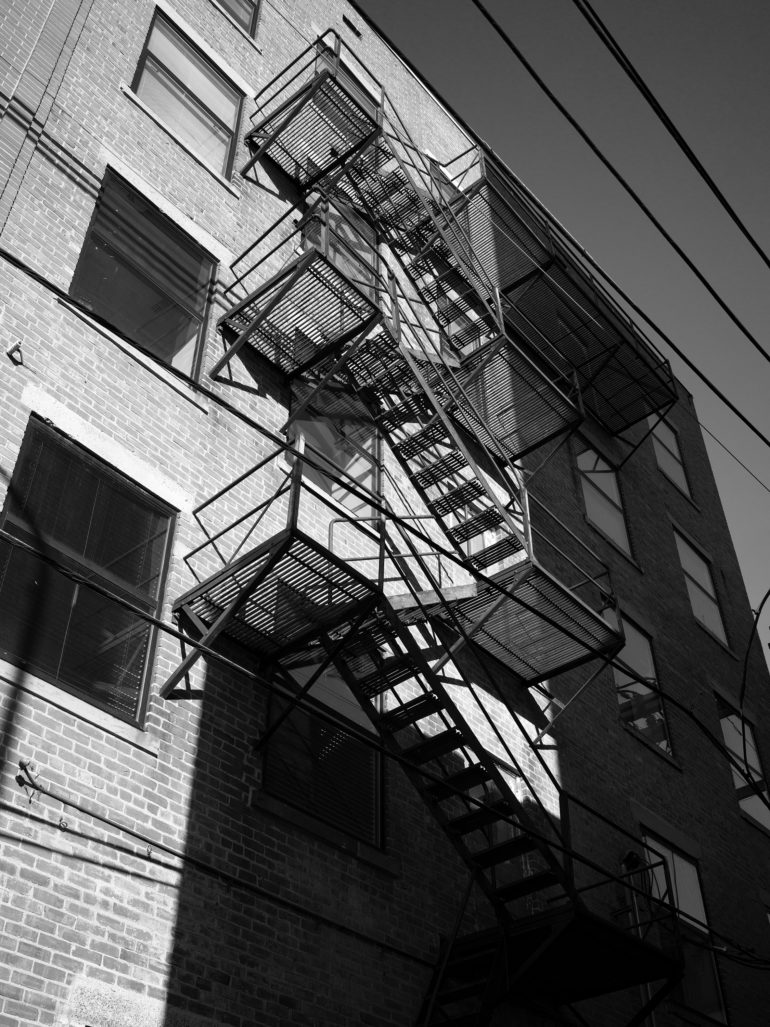

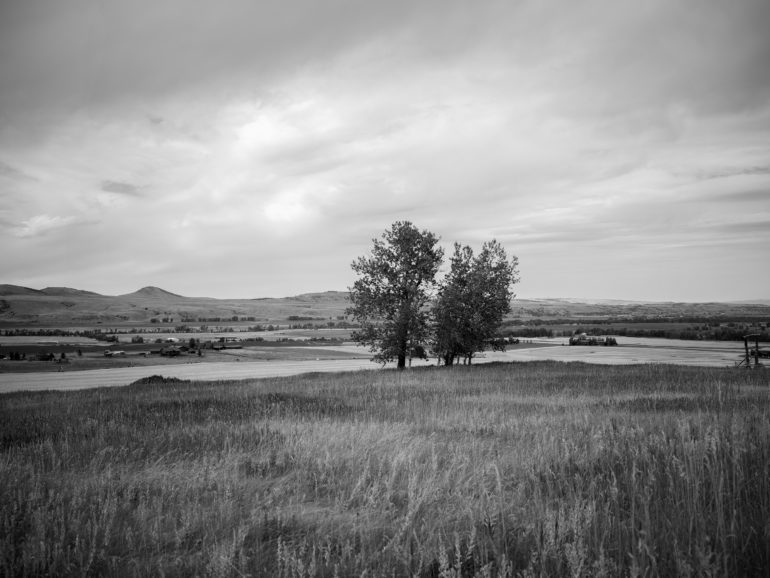
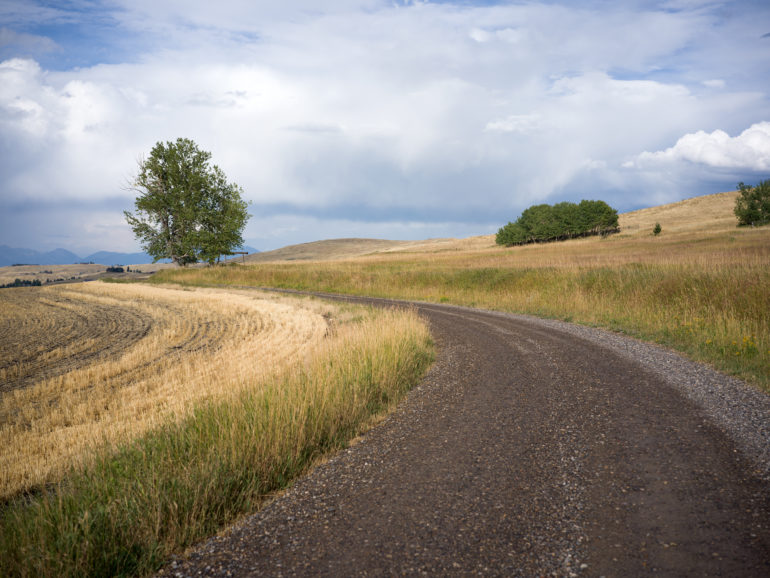
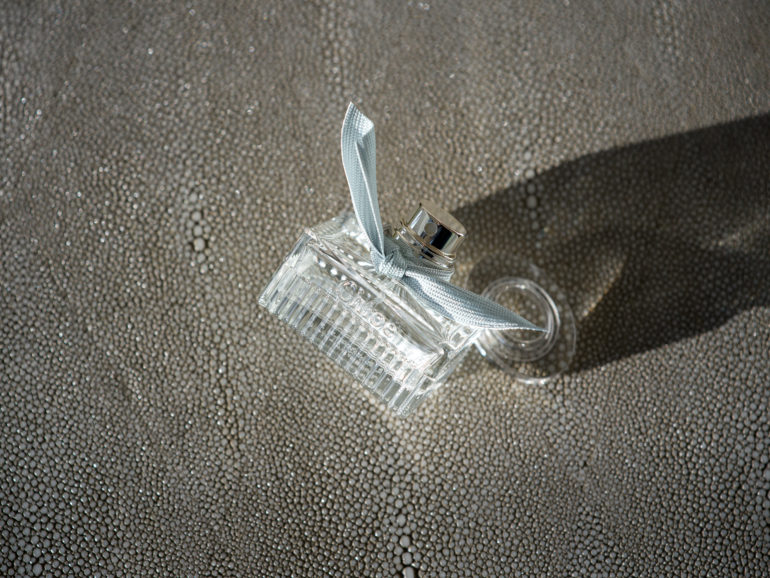
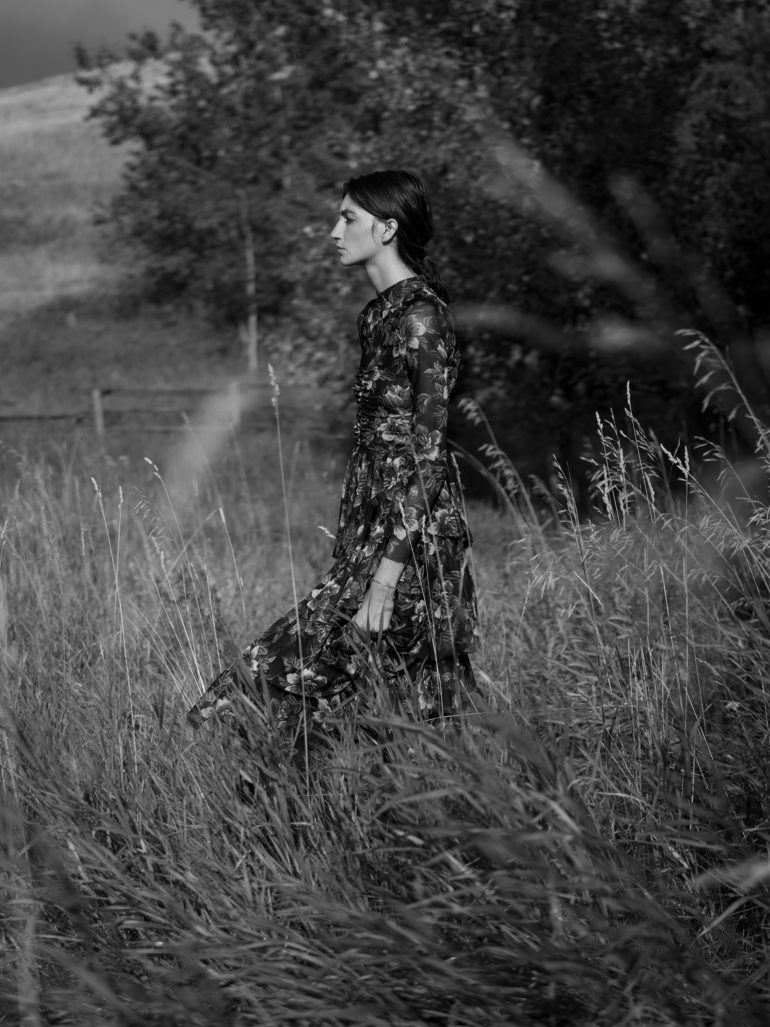
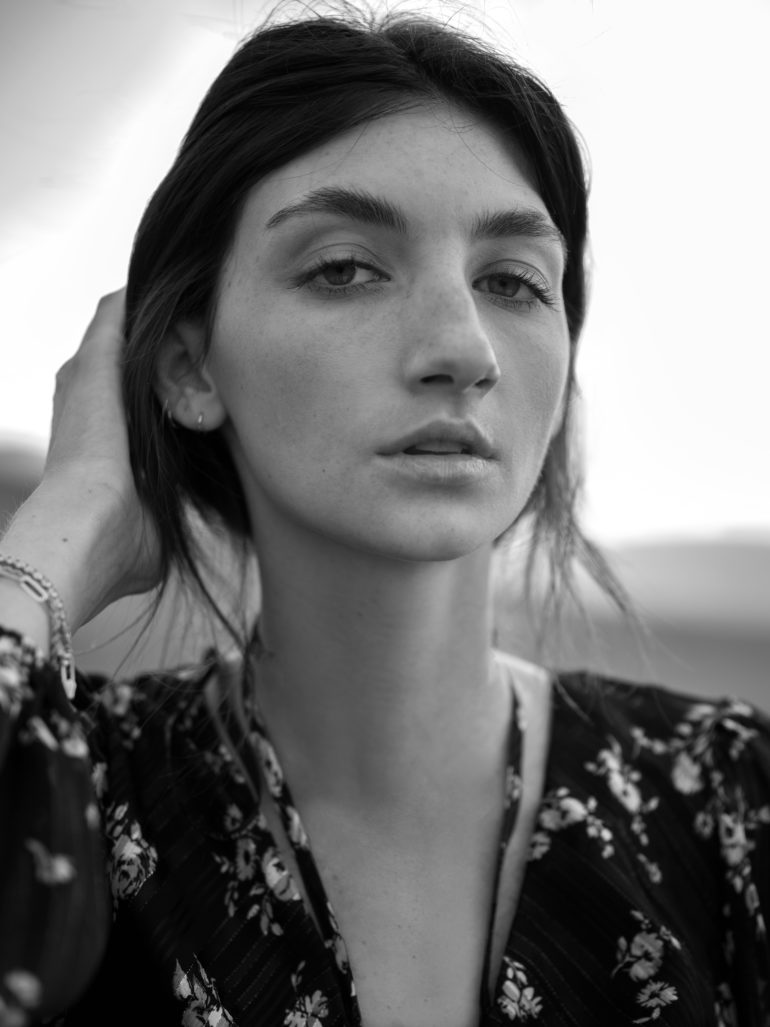
Who Should Buy The Hasselblad X2D 100c?
Photographers who appreciate premium aesthetics, stellar images, simple menu systems, and Hasselblad’s color science should buy this camera. Although the camera isn’t perfect, it’s a worthy investment for those who can afford it. It is a fantastic option for commercial, portrait, fashion, real estate, and street photographers.
The X2D 100c autofocus is slow, and there is no focus peaking. If Hasselblad chooses to address these with future firmware updates, it will make the camera even better. I would choose the X2D 100c over the GFX100s if they did. Additionally, the charging hub and an extra battery should come standard with the camera body. People would gladly pay the difference. It would also be great if they considered a 50MP lossless compression option as storage prices continue to increase.
The X2D 100c is an exquisite camera that feels luxurious in your hands, as evidenced by the premium $8,199 price tag. That feels like a lot. However, by Hasselblad standards, it’s inexpensive. Not to mention, the price of full-frame mirrorless options keeps increasing.
True to form, this Hasselblad excels in areas that it performs well. It produces extraordinary images with editorial-like hues without the need to edit. Although it doesn’t have built-in skin softening like other competitors, I didn’t miss it. I appreciate being able to spend more time photographing and minimal time editing. That alone is worth paying for.
Tech Specs
Tech specs are from Hasselblad.
- Camera Type: Mirrorless Medium Format Digital Camera with autofocus, auto-exposure, interchangeable lenses
- Construction: Machined aluminium. Tripod socket 1/4”
- Sensor Type: Back-side illuminated (BSI) CMOS, 100 megapixels (11656 × 8742 pixels, pixel size 3.76μm)
- Sensor Dimensions: 43.8 × 32.9mm
- Image Size: Stills: 3FR RAW: capture 206MB on average
- File Format: Hasselblad 3FR RAW, full size JPEG
- Drive Mode: Single and Continuous Drive, Self Timer, Interval Timer, Exposure Bracketing
- Color Definition: 16-bit; dynamic range up to 15 stops
- Image Stabilization: 5-axis 7-stop in-body image stabilization (IBIS)
- ISO Speed Range: ISO Auto, 64, 100, 200, 400, 800, 1600, 3200, 6400, 12800, 25600
- Storage Options: Built-in 1TB SSD. Extra CFexpress Type B card with a max storage capacity of 512GB supported.
- Recommended Memory Cards: Sony CEB-G series CFexpress Type B memory cards (128GB) SanDisk Extreme Pro CFexpress Type B memory cards (128GB, 256GB, 512GB)
- Color Management: Hasselblad Natural Colour Solution (HNCS)
- Capture Rate: 3.3fps in a 14-bit colour depth
- User Interface: Touch interface including swipe, scroll and pinch/spread to zoom. Camera grip with buttons and scroll wheels.
- Touch Display: 3.6-inch TFT type, 24-bit full-colour, 2.36-million-dot. Touch functionality: full support. Tilting angle: 40°, 70°
- Top Display: 1.08-in TFT type, 18-bit full-colour, 158,400-dot
- Electronic Viewfinder (EVF): OLED, 5.76-million-dot. Viewing area: 100%. Magnification: approx. 1.00x with 65mm medium format lens at infinity, –1 m-1
- Histogram Feedback: Yes, in Browse mode on touch display and in EVF
- IR Filter: Mounted in front of sensor
- Software: Phocus is compatible with computers with 8GB of RAM or more running on macOS 10.15 or later, or Windows 7 64-bit or later. Phocus Mobile 2 is compatible with iPad models with 3GB of RAM or more and with iPhone X or later models running iOS 15.0 or later.
- iOS Device Support: iPad models with 3GB of RAM or more and iPhone X or later models running iOS 15.0 or later
- Platform Support: macOS 10.15 or later, or Windows 7 64-bit or later
- Host Connection Type: USB 3.1 Gen2 Type-C connector (transfer speed up to 10Gbit/s)
- Operating Temperature: -10° to 45° C (14° to 113° F)
- Operating Humidity: No more than 85% without condensation
- Wi-Fi: 802.11b/a/g/n/ac/ax, Wi-Fi with 2×2 MIMO
- Supported Lenses: Hasselblad XCD lenses with built-in electronically controlled leaf shutter and aperture. Automatic or manual focusing with instant manual focus override. Lens shades can be mounted in reverse for transport. Compatible with all H System Lenses and some H System accessories using the XH Lens Adapter. Also compatible with V System and XPan Lenses using the XV or XPan Lens Adapter.
- Shutter: Electronically controlled leaf shutter with speeds up to 1/4000s. Flash sync at all speeds. Optional electronic shutter
- Shutter Speed: 68 min to 1/4000s with XCD Lenses*.
- Flash Sync Speed: Flash can be used at all shutter speeds. Mechanical shutter only.
- Flash Control: TTL centre weighted system. Compatible with Nikon System flashes. ISO range 64 to 25600. Flash output can be adjusted (-3 to +3 EV) for fill-in purposes independent of ambient light. Sync at all shutter speeds. Mechanical shutter only.
- Flash Compatibility: In TTL-mode, the following Nikon Flash products can be used: SB-300, SB-500, SB-5000, SB-700, SB-900, SB-910. The following Profoto products can be used in TTL-mode: A1, B1 and B2 with Nikon interface.
- Focusing: Autofocus single (AF-S) and manual focus (MF). Instant manual focus override. Automatic focusing using phase and contrast detection. Focus indicator or 100% zoom available in MF. Up to 294 Phase Detection Autofocus (PDAF) zones.
- Exposure Metering: Spot, centre weighted, and centre spot
- Power Supply: Rechargeable Li-ion battery (7.27VDC/3400mAh). Can be charged in-camera via the USB-C port on the camera body. Charging time is approx. two hours using the included 30W USB-C charger.
- Dimensions: 148.5 × 106 × 74.5mm
- Weight: 895g (camera body with the battery); 790g (camera body only)
The Phoblographer may receive affiliate compensation for products purchased using links in this blog post.


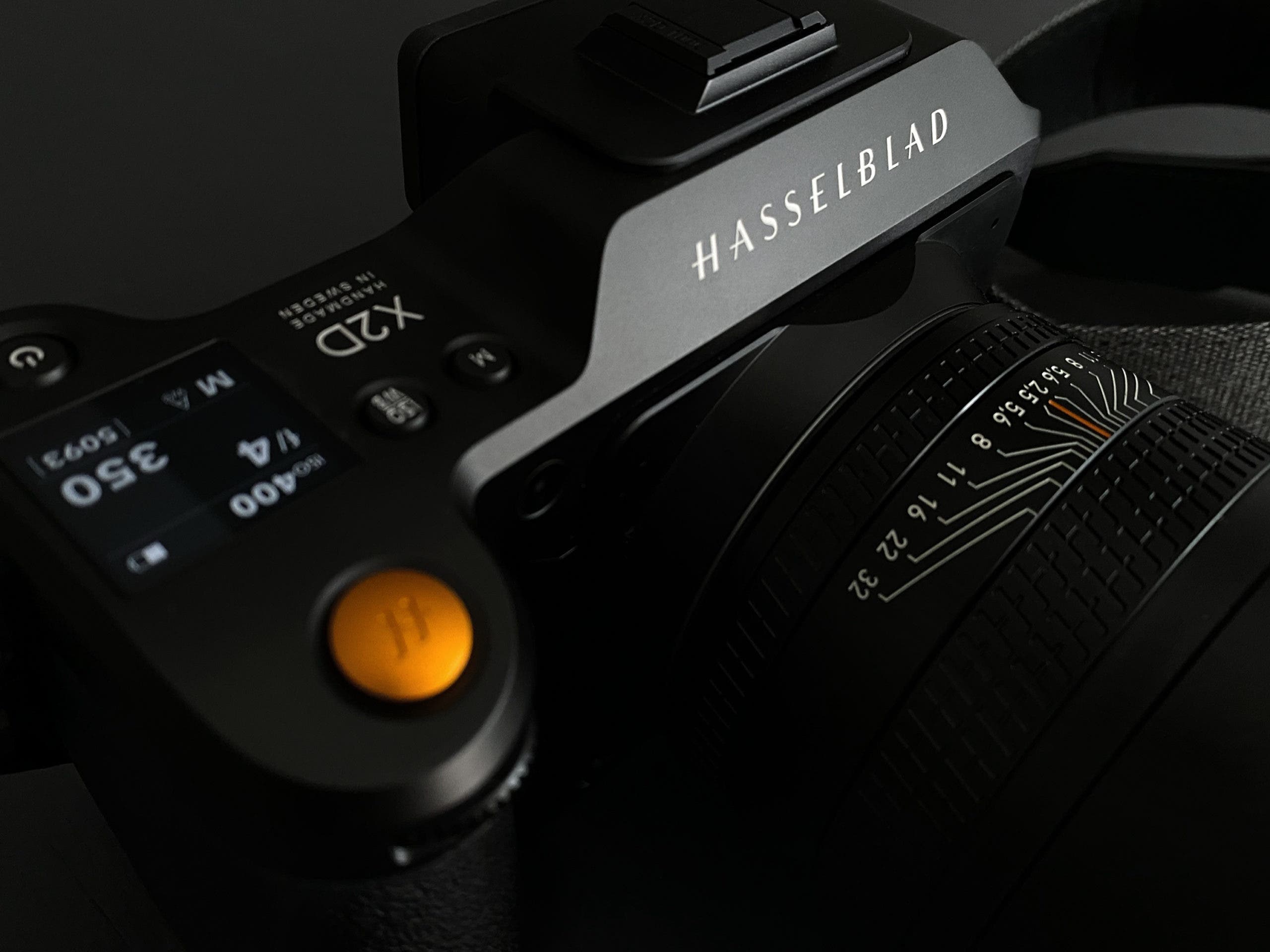
Leave a Reply